

10 Exciting Field Trips to Teach Kids About Money This Summer!
Summer is the perfect time to have fun and learn valuable skills like managing money. Understanding how money works is essential for our future success. So, prepare for an adventure-packed summer with these ten fantastic field trips that will teach you all about money while having a blast!

- Bank Bonanza: Visit a local bank and discover the secrets of money management. Take a tour of the bank and learn about different bank accounts, such as savings and checking accounts. See how money is kept safe in vaults and learn about the importance of saving and budgeting.
- Thrifty Thrift Shop: Head to a thrift shop and embark on a treasure hunt for great deals. Learn about the value of money by searching for unique items at affordable prices. You’ll have a blast understanding the importance of smart shopping and saving money.
- Entrepreneurial Adventure: Become a young entrepreneur by setting up a business for a day. Whether it’s a lemonade stand, a bake sale, or a craft fair, selling your creations will teach you about pricing, budgeting, and making a profit. Plus, it’s an excellent opportunity to showcase your creativity!
- Budget-Friendly Grocery Hunt: Accompany your family on a grocery shopping trip and take charge of finding the best deals. Look for discounts, compare prices, and use coupons to save money. This hands-on experience will teach you to make wise choices and stretch your budget.
- Real-Life Math at the Farmers’ Market: Visit a local farmers’ market and learn the value of fresh produce. Talk to farmers, understand how they grow their crops, and discover how they set prices. Practice your math skills by calculating the cost of fruits and vegetables while supporting local farmers.
- Money-Smart Museum Tour: Explore a money-themed museum that showcases the history of currency and the importance of financial literacy. Engage with interactive exhibits, learn about different currencies worldwide, and understand how money has evolved.
- Budgeting Picnic: Plan a budget-friendly picnic with your friends or family. Create a shopping list and calculate the costs of food, drinks, and picnic essentials. Learn to prioritize and decide based on your budget while enjoying a delightful outdoor meal.
- Financial Literacy Library Adventure: Visit your local library and dive into books that teach financial literacy. Discover engaging stories, comics, and educational resources that explain money concepts in a fun and easy-to-understand way. Participate in library programs or workshops focused on money management. Teach Your Child About Money Through Play: 110+ Games/Activities, Tips, and Resources to Teach Kids Financial Literacy at an Early Age is a great resource.
- Future Investor Simulation: Participate in an online investment simulation game. Learn about the stock market, research companies, and make virtual investments with pretend money. Track your progress and see how your decisions impact your portfolio. This exciting activity will introduce you to the world of investing.
- Community Service for Financial Education: Volunteer for a local organization that promotes financial education in the community. Assist in organizing workshops or events that teach others about budgeting, saving, and managing money effectively. By giving back, you’ll reinforce your understanding of financial literacy.
This summer, combine adventure with learning as you explore these fun field trips to teach you valuable lessons about money. Each trip offers unique opportunities to develop money management skills, from visiting banks and thrift shops to becoming an entrepreneur and exploring financial literacy resources. So, grab your friends and family, embark on these exciting adventures, and become a savvy money master this summer!
The book below is available on Amazon.

Share this:
Published by simplyoutrageousyouth
View all posts by simplyoutrageousyouth
Leave a Reply Cancel reply
Discover more from.
Subscribe now to keep reading and get access to the full archive.
Continue reading
- Explore ANA
- Money Museum
- Publications
- Dealer Directory
- Admission Specials
- The History of Money
- The Medal in America
- Field Trips
- Virtual Exhibits
- Virtual Tours
- Online Collection Database
- Tales From The Vault Blog
- Museum Masterpiece Videos
- Online Store & Monthly Auction
- Edward C. Rochette
- Gift Acceptance Policies
Money Museum Field Trips
Bring your class to the Money Museum for a priceless experience!
The Money Museum extends complimentary admission for students, teachers and chaperones on all registered field trips. A knowledgeable docent will guide your class through a fun-filled tour as students learn about art, history, science and economics. Engaging questions, hands-on learning and a coin minting demonstration bring money to life!
Bring your class to the Money Museum — it just makes cents!
At the Money Museum, students will enjoy a guided tour through our History of Money exhibit, learn how America’s first coins were made with a Mini-Mint demonstration , and examine some of the world’s most valuable coins! Money allows your class to explore art, history, science, and economics. Even better? We tailor the tour to you and your students! Come cheque us out to learn:
- How ancient coins were made
- What items have been used as money throughout history
- Why the first coins were invented over 2,000 years ago
- How a coin can be worth millions of dollars
- And so much more
Plus, teachers will take home some lesson plans and worksheets to help bring the museum back to the classroom.
A Visit to the Money Museum… it’s priceless!
*Money Museum Pricing Policy Updates
To enhance the visitor experience and ensure each tour is both educational and tailored to a group’s unique needs, the Money Museum is updating its pricing policies, effective June 1, 2024.
School Tour Docent Fee, Admission Still Free!
In response to the growing demand, school tours will incur a $25 docent fee for up to 25 students. Groups of more than 25 will require an additional docent for $15. These fees support the training and recruitment of our dedicated docents to ensure a memorable experience. Please note: advance booking is mandatory for all educational groups.
We understand the importance of educational visits and are committed to keeping costs down. Therefore, the only charge for school groups will be the docent fee. Admission for all students and chaperones will remain free. Our goal is to provide an enriching experience for students, teachers, and assistants alike.
Enhancing your Experience
To ensure a personalized and engaging tour, one decent will work with a group of up to 25 individuals, including students and chaperones. For larger groups of up to 50, we’ll assign two docents to cater to your needs effectively.
The nominal fee allows us to tailor our tours to the specific needs of your group. Additionally, we’ll provide teacher packets with curriculum information and take-home worksheets for students, enhancing the educational value of your visit.
Register your class for a field trip using the button below, email [email protected] or call (719) 482-9814.
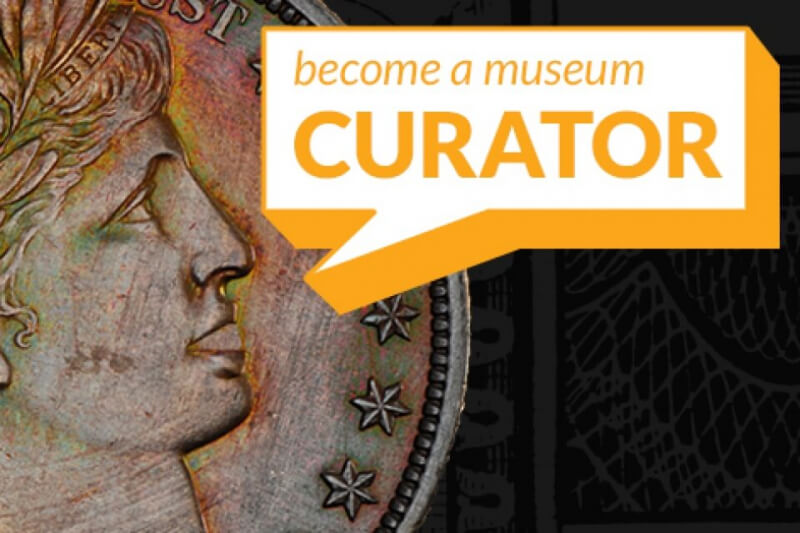
Upper Elementary Grade Lesson
Five Money Focused Field Trips To Take With Your Kids
August 23rd, 2022 by Team Sammy

We are pleased to welcome Sharita M. Humphrey, CFEI as a Sammy Rabbit Guest Blogger.
It is a delight to have Sharita contribute her thinking on giving kids money focused filed trips to increase their financial education knowledge.
About Sharita
Sharita M. Humphrey is an award-winning finance expert, money mentor and Certified Financial Education Instructor.
Once broke and homeless, Sharita completely transformed her life. She is now a successful entrepreneur and one of the most in-demand money coaches for individuals and business owners of color.
In 2020, Sharita was named the National Financial Educator of the Year.
You can discover more about Sharita and her mission at SharitaMHumphrey.com

Have Fun Teaching Your Kids About Money
Have you ever thought of taking your kids on a money focused field trip?
Many kids remember a field trip far longer than a classroom lecture.
Experiences are one of the most effective and engaging forms of learning. It's true for everyone, kids and adults.
As kids are exposed to new concepts in a fun and engaging way, you’ll see them absorb financial literacy knowledge and skills like sponges. The adventure may even inspire them to want to practice the personal finance habits that lead them to financial freedom as they grow up.
So, when it comes to financial education, I strongly encourage parents and educators to give kids more money focused field trips.
Below, find five (5) fun, low cost easy to execute field trips that will help any parent or educator teach kids about money.

(1) Field Trip to the Bank
Visit your local bank. It is a fun and free way to help children learn about money and more, like math, business and banking.
Start by calling banks in your area. Find out if they are willing to walk your kids or a classroom of students through a day-in-the-life of money, maybe even their own money!
Kids will get to see and experience the bank vault, lots of cash in all denominations; coins wrapped and unwrapped; tellers counting money and handling deposits and withdrawals; managers and loan officers interacting with customers; ATM machines; debit and credit cards; checks, deposit and withdrawal slips; and much more, perhaps even a tutorial from a manger on investing and/or the difference between simple and compound interest.
I love that the experience provides children an opportunity to see how both money and math can be applied to their daily lives. Lots of kids struggle with math. Many don't understand why it is important or how it applies to their lives. This field trip can change that.
If you can’t find a bank in your area that is open to field trips, then take your kids along with you when you go to the bank. It is a great way to pique their interest in money and to help them better understand their own financial responsibilities.

(2) Field Trip to the Supermarket
You probably already take your kids to the supermarket on a regular basis. Why not periodically take advantage of these regular excursions to add to your child's personal finance knowledge?
Supermarkets contain endless opportunities to sharpen kids money skills.
Start by establishing a tradition of making a grocery list at home. Teach them how you list, plan and budget for the items you need and want to purchase.
Then head to the store. As you shop together, talk about how you make money-wise decisions like:
---properly taking advantage of sales and promotions
---the importance of identifying cost per unit and how to calculate the best deals
---situations where you may be able to save money by using coupons, buying store brands versus name brands, etc.
You get the idea. Remind kids that while treating yourself once in a while is fine, it’s important to stick to your budget and consistently make wise spending choices.
Consistency provides predictable outcomes. Practice what you preach - as much as you are able to. Lead by example and you predict great money sense will become second nature to your kids as they watch and learn from mom and dad.
Enjoy the experience. Be sure your kids do the same. Be creative. There are an infinite number of ways to build on the supermarket learning experience. SEND us some of your favorite suggestions. We will post them as an addendum to this article and/or in social media. Let's all grow our knowledge and kids together!!!

(3) Field Trip to the Mall
While outings to the supermarket largely pertain to food and health, a field trip to the mall expands one's personal finance learning possibilities.
At the mall you and kids can shop for clothes, household goods, technology and just about everything under the sun. With stores selling nearly everything one may need or want, plus providing access to tempting treats around every corner, a field trip to the mall is one of the best places to teach kids about money. It is a sensational place to learn the essentials of money management. Kids are sure to have a blast!
Use the same set up and pre-shopping routine established for going to the supermarket. Work with your kids to create a budget and a shopping plan. This is a proven strategy to set them up for success. Talk and walk them through some of your core values and money management strategies, such as:
---How to stick to a budget
---How to ask the right questions to get the best deals
---Simple ways to calculate sales, tax, and discounts.
---How to save up for certain items they want, rather than spending their whole budget right away.
(4) Field Trip to a Library or Museum
Here is a secret more people should be aware of - libraries and many museums, including mobile museums, are wonderful places to teach your kids about money. And many of them are now making efforts to incorporate financial literacy education into their offerings.
If you think this approach will resonate with your kids, do an online search and see what a local library or museum offers or might considering in the way of youth financial education. Maybe they have existing programs and resources.
Here is a partial list of what I have uncovered. Some true treasures!
---The American Numismatic Association Money Museum
---The Los Angeles’ Connecting Cultures Mobile Museum. This museum is now 20 years old. Thousands of campuses have already experienced their service without leaving their premises. They have a commercial collection that focuses on resources, different kinds of trade, and the history of colonization. Learning about culture and history helps kids understand the importance of money, how it evolved into what it is today, and it’s role in shaping the world we live in. There are artifacts that are free to touch so kids can get hands-on with a 3-dimensional learning experience.
---The Higgins Museum of National Bank Notes
---Museum of American Finance
---The Federal Reserve "Money Museum"
---A good way to discover more about library offerings is by doing the following search: Public Library Association Financial Literacy.

(5) Education Experience at a Money Camp
There are music camps, wilderness camps, and science camps. And yes, there are also money camps.
These camps teach basic financial skills and many related core values. Your kids will learn things like the benefits of saving, budgeting, investing, insurance, compound interest, entrepreneurship, etc.
Money camps are run by a wide variety of organizations. Some camps last a few hours while others last a week or two.
Again, a search of "money camps for kids" will help you locate the perfect one for your child.

A Closing Word on Financial Literacy
I want to encourage you to give your kids a financial education. Help them be the best versions of themselves can be. Teaching them how to handle and manage their money will go a long way in achieving this objective.
There is no doubt, money skills are powerful and essential to realizing and sustaining long term success. By preparing, teaching and encouraging kids to save, budget, delay gratification, make smart spending choices, etc., you are giving them the practical and precious gift of financial literacy. It's a gift that will give them and their children a better life.
So, do everything you can to make certain they become financially competent, including incorporating money-focused field trips into their financial education regimen!

Contribute and Deposit Your Thoughts
Have you ever taken your kids or students on a "financial education" field trip? What was your experience? Will you do it again? Do you recommend others do it?
Tell us about it in a comment! Post a thought on LinkedIn .

Share your story and perspective with Sammy Rabbit and his global audience on a personal finance topic that interests you.
Contact Sammy to learn more.

Contact and Connect with Sammy Rabbit!
Website and Email
If you have questions, suggestions or would like learn more about Sammy Rabbit and his mission to teach kids great money habits and other important life skills, contact us!
CLICK to contact Sammy via our website contact form;
or email us at: [email protected]
Social Media
Twitter | Facebook

- FAQs/Contact

Freedom Homeschooling
20 ways to save money on homeschool field trips.
by Freedom Homeschooling | Jan 5, 2023 | Field Trips , Free Printables

Field trips provide hands-on learning experiences and are lots of fun too. However, taking field trips can be challenging when money is tight. Fortunately, there are many ways to save money on homeschool field trips! Here are some ways I have found.
Every Kid Outdoors
Every Kid Outdoors is a program sponsored by the National Park Service that gives U.S. fourth graders and their families free admission to over 2,000 federal parks, lands, and waters. If you have a fourth grader in your family, print your free pass here .
Museums for All
Through Museums for All, individuals receiving food assistance (SNAP benefits) can gain free or reduced admission to over 1,000 museums throughout the U.S. by presenting their EBT card. Museums for All’s website provides a searchable directory of participating museums.
Local Businesses
Ask around in your community, and you will likely find that many business owners are willing to offer tours and share about what they do. We have toured a veterinary hospital, a honey bee farm, and other businesses with local homeschool groups without paying anything. Additionally, Factory Tours USA lists factories that offer tours, many of which are also free.
Community Services
Learning about community services is another great way to take a free field trip. Homeschoolers in our area have been able to tour fire departments, the public library, the recycling center, and the mayor’s office.
Explore Nature
Explore nature and get exercise with a free family outing to the beach, a nature trail, or even a walk down a country backroad. You could also add geocaching or a scavenger hunt for more fun.
Free Museums
Google “free museums” in areas around where you live. I’ve found that most cities usually have at least one free museum. The most common type of museum to offer free admission seems to be art museums, but I have also found other types.
Homeschool Discounts
Group discounts.
Many places will offer discounts to groups over a specific number. Organize a field trip with a group of friends or a local homeschool group, and everyone will get to save on the field trip.
Discount Days
Some popular field trip destinations offer reduced admission on certain days of the week. For example, a zoo in our area offers half-price Tuesdays. Your family can save a lot of money on homeschool field trips by planning your outings on these days.
Seasonal Passes and Annual Memberships
Consider purchasing a seasonal pass or annual membership to places your family would like to visit frequently, such as a local nature park, zoo, or science museum. These memberships often don’t cost much more than purchasing day passes twice.
Home Improvement Stores
Lowe’s offers DIY-U Workshops for kids, and Home Depot provides Kids Workshops . Both programs offer a free craft or project kit and an in-store class. For a schedule and to register, see the stores’ websites. You may also want to check with other home improvement stores in your area to see if they offer classes or field trip opportunities.
Churches and Places of Worship
Many churches sponsor free or low-cost events for the community. This could include fall festivals, musical performances, missionary fairs, food festivals, and more. Additionally, some historic churches offer free tours.
Community Events
Free community events are another great way to save on homeschool field trips. Often cities or non-profit organizations will sponsor free events. Keep an eye out for these on local news websites and social media. What’s available will vary by area, but these can include things like cultural heritage events, musical performances, outdoor summer movies, and holiday events.
Library Events
Libraries aren’t just for borrowing books. Many libraries offer things like storytimes, crafts, and various educational events and presentations. These programs are especially common during the summer months when school is out.
Volunteer Opportunities
Volunteering is an excellent way for your family to take a field trip while giving back to your community. Volunteering can also be a way for older kids to gain work experience and skills. Check around in your area to find out which organizations allow children to volunteer.
Colleges and Universities
Touring college and university campuses isn’t just for teens making a college decision; it can be a fun learning experience for the entire family. Many campuses feature historical buildings and museums. While these museums aren’t usually free, they are often lower-priced than other field trip options. Also, keep an eye out for community and educational events sponsored by colleges in your area.
Groupon and Other Discount Websites
Websites like Groupon often sell discounted tickets to events and attractions. It can be hit-or-miss, but it’s worth occasionally browsing sites like these for deals that could save your family money on homeschool field trips.
Credit Card Perks
Some credit card companies offer free or discounted tickets as a perk to their customers. One example of this is Bank of America’s Museums on Us program. This program provides free general admission to cardholders, during the first full weekend of every month, to over 225 museums across the U.S. If you have a credit card, check to see if they offer a similar program.
Travel Off-Season
Planning a big trip? If you are planning on traveling out of town for a longer field trip, try to plan it during the off-season rather than peak travel times, especially if the area is a popular tourist destination. Not only will lodging and other expenses be less expensive, but the places you visit will also be less crowded than during peak travel times.
Virtual Field Trips
If field trips aren’t possible at all right now because of a lack of transportation, illness, or other constraints, you may want to try a free virtual field trip instead. Virtual field trips allow your family to explore the world without leaving home.
Free Printable Field Trip Journal and Log
Before you head out on your next field trip, be sure to print our Field Trip Journal and Log. This 7-page printable set includes pages for your kids to record the details of their field trip, including where they went, what they did, what they learned, and more. You could even compile the field trip journals from every field trip your family takes this year into a binder to create a field trip memory book. The printable set also includes a field trip log for your child to keep a record of every field trip and their rating of each one.
>>> Click here to grab your free printable Field Trip Journal and Log. <<< Simply enter your first name and email address in the form and opt-in to receive our free newsletter. As a thank you for subscribing, you’ll receive this PDF freebie in your inbox within moments. If you’re already a subscriber, enter your information in the form, and we’ll be glad to send the printable to you too. Don’t worry; you won’t receive duplicate newsletters from us.

I hope your family has lots of fun-filled field trips this year!
At the Freedom Homeschooling Blog, you'll find homeschool resources and information, tips for homeschooling on a budget, encouragement, and more! Please follow us on Facebook, Pinterest, Instagram, Threads, and X.

- Free Printable Planners
- 20 Ways to Save on Field Trips
- How to Save Money on Homeschooling
- Top 20 Free Homeschool Curriculums
- Where to Buy Used Curriculum
- What Curriculum Should I Use?
- Free September Unit Studies

- View Calendar of Events
- Buy Tickets
- Directions and Parking
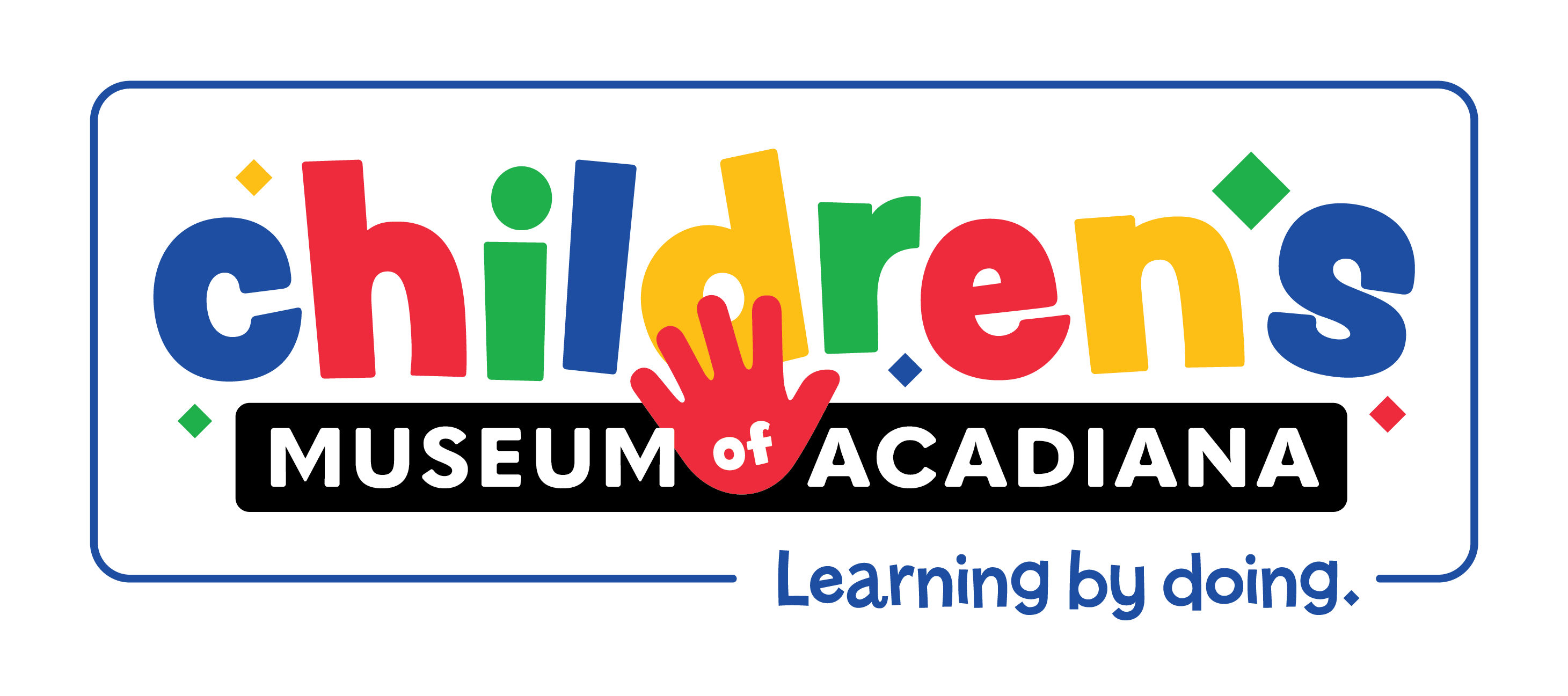
Money Wise: EARN.SPEND.SAVE
1st to 2nd grade. $8 per student / $3 per chaperone / school faculty free .
Young learners discover what it means to earn, spend, ad save money during this financial focused field trip. Students identify specific coins and spend the pretend money as they “pay” to play.
Participating in the Money Wise: Earn, Spend & Save field trip is a fun way to provide students with a foundation of financial literacy by presenting activities in a real world setting. Young learners discover what it means to earn, spend, and save money during this financial literacy focused field trip. At the start of the trip, students will identify coins and earn play money. They will then spend the pretend money as they “pay” to play in our exhibits. Students will have saved at least $1 of their money earned by the end of the trip, which they can use to pay for a small prize.
Curriculum Connections:
Math Standards
- 1.NBT.A.1 Count to 120, starting at any number less than 120. In this range, read and write numerals and represent a number of objects with a written numeral.
- 1.NBT.C.4 Add within 100, including adding a two-digit number and a one-digit number, and adding a two-digit number and a multiple of 10.
- 1.MD.D.5 Determine the value of a collection of coins up to 50 cents. (Pennies, nickels, dimes, and quarters in isolation; not to include a combination of different coins.)
- 2.MD.C.8 Solve word problems involving dollar bills, quarters, dimes, nickels, and pennies, using $ and ¢ symbols appropriately. Example: If you have 2 dimes and 3 pennies, how many cents do you have?
- 2.NBT.A.2 Count within 1000; skip-count by 5s, 10s, and 100s.
- 2.NBT.B.5 Fluently add and subtract within 100 using strategies based on place value, properties of operations, and/or the relationship between addition and subtraction.
Economics Standards
On Economic Decision-Making
- 1.5.1 Identify ways to save money
- 1.5.2 Distinguish between needs/wants of people by responding to real life situations
- 1.5.3 Distinguish between goods and services
- 1.5.5 Identify ways people exchange/trade goods and services
- 2.5.2 Explain the benefits of personal savings
On Producers and Consumers
- 2.6.1 Describe how people can be both producers and consumers of local goods and services
- 2.6.3 Provide examples of how money and barter are used to obtain resources (goods and services)
- 2.7.1 Describe different types of domestic and international jobs/careers in which people work to earn income.
All “MoneyWise” field trips must be scheduled in advance and require a minimum number of 20 children participating.
- Grades 6-12
- School Leaders
Have you gotten your free poster delivered? ✨
10 Things to Do Before Taking Your Students on a Major Field Trip
Plus, how to pay for it!

Raise funds for your school when families buy what they love—pizza! Little Caesars Fundraising is quick, easy, and 100% virtual. Get started today!
Do you want to take your students somewhere amazing next school year? We’ll help you figure out everything you need to know, from field trip fundraising to all of the little details.
1. Research how the trip aligns with and supports your curriculum.
Big trips cost schools money, even if you’re doing field trip fundraising to support most of it. You’re more likely to get your trip approved if you can show your administrator how and why this trip will enhance your curriculum. If you’re feeling really ambitious, write out goals and objectives for your trip, just like you would a lesson plan. The bigger the trip the more this matters.
2. Get permission from your admin.
Once you’ve identified where you want to go, you’ll need to have a talk with your admin. Be prepared. In addition to researching how your trip aligns with curriculum, you’ll want to have a general idea of the cost per student and know what kind of success other teachers have had with similar trips. Be prepared to discuss which adults you want to make the trip with you and how you expect to pay for the trip. Depending on your situation, you may need to be prepared to make a hard sell, or this could just be a formality. Either way, the more questions you are prepared to answer, the happier your admin will be.
3. Decide whether or not to use an agency.
If you’re planning a major trip (cross country, overseas, or someplace more than a few hours away from school), you may want to consider working with an agency. At my school, we book our annual Washington, D.C., trip through an agency. The agency specializes in D.C. trips, and it saves us all sorts of time and stress. I can’t imagine doing this trip without their help. But for our overnight trip to the theatre festival that is a few hours away, teachers handle all of the planning. Since the school organizes this trip every year, most of the details are pretty well ironed out, and the process is smooth. Early in the process, take an honest look at what needs to be done to pull off your trip successfully and determine whether you need to seek outside help.
4. Explore field trip fundraising options.
Most major field trips will cost more than many schools are willing or able to pay for. That usually means that it’s up to teachers and parents to track down field trip fundraising options. There are countless options: bake sales, carnivals, jog-a-thons, and more. One of our favorite field trip fundraising methods is Little Caesars Pizza Kits because they’re such an easy product to sell. Your students’ neighbors may have closets full of wrapping paper, but they are very likely out of pizza. Learn more about how easy it is to run a pizza fundraiser.
5. Have a parent meeting.
The bigger the field trip, the earlier in the year you’ll want to have your parent meeting. Even though both trips are in the spring, we have our Washington, D.C. meeting just after the school year gets underway but hold off on our theatre trip meeting until January. Parent meetings are a great way to set expectations and get a sense of how many chaperones you’re going to have. For big trips, you might even want to hold more than one meeting. Have an initial meeting to introduce the opportunity and gauge interest. (This is also the time to enlist parent support for the field trip fundraising angle.) Then host a follow-up meeting where you review logistics and details.
6. Plan your agenda for the trip.
You’ll want this field trip to be just as well planned as your classroom lessons are, likely even more so. We all know that students with nothing interesting to do will find something interesting to do. So while it may be tempting to loosen the reigns on a field trip, don’t. That’s not to say that you can’t offer your travelers a little autonomy, just make sure you’ve planned that freedom ahead of time and have considered how you are going to make sure students are adequately supervised. Also make sure your students know the plan. Highlight meal times and essential departure times so that you increase the chances of your students being where they should be on time.
7. Investigate flights, hotels, and meal options.
This is one of those tasks that you’ll have to come back to a few times. You’ll want to investigate these costs as you’re requesting permission to hold your event and then again as you begin to make it a reality. Even if you’re not using a travel company for your entire trip, you still may want to consider a travel agent if there is any plane travel involved. Booking flights and hotels for more than a few people can be a logistical nightmare.
Spend some time choosing venues for meals. Maslow’s hierarchy has never been more important than on a major field trip. Kids are going to make better decisions and handle the rest of the uncertainty that comes with travel far better if they are well nourished. Good planning here makes a big difference, especially if you’re traveling with a large group.
8. Arrange for chaperones.
Unless you’re traveling with just a few kids, you’re going to want other adults on this trip with you, and you’ll probably want at least some of those adults to be fellow faculty members. We always have at least one sick child on our annual Washington, D.C., trip, so it’s been important to have some faculty members who can continue the trip with healthy students and some who are willing to stay back when students are ill.
Parents can fill this role, too, but more than a few times we’ve been surprised to find that some of our most supportive parents don’t make the most effective field trip chaperones. Faculty members who know the rules and know the students are often best prepared to engage with students who may be under more stress than usual because of the travel. Which leads to our next piece of advice.
9. Make a plan for student behavior.
We all know that when kids are in new environment they don’t always make the best choices. Set them up for success with crystal clear expectations. Let students know up front what will happen if they aren’t able meet your expectations on the trip. Help them by providing as much information as you can ahead of the trip. For example, “When we visit Arlington National Cemetery on the last day, we will be standing outside for long periods of time. We still expect everyone to show respect by not talking during the wreath ceremony.”
We always hope that students will meet our expectations, but it’s wise to make a plan for students who are simply not able to handle the trip. Will they remain in the hotel room with one of the other chaperones? Will you send them home? (If so, how will they get home? Will you ask their parent to fly out to retrieve them?)
10. Plan your follow-up lessons.
When you provide your students with the kind of schematic context that comes from a major field trip, they are primed for even more learning when they come back. If they’ve visited the Tower of London, for instance, lessons about Henry VIII’s reign will be that much more impactful. Take advantage of this window of opportunity and plan lessons that will let you capitalize on their experience.
Check out our Best Field Trip Ideas for Every Age and Interest (Virtual Options Too!)
What have we missed are there things on your must-do list when you’re planning a major field trip let us know.
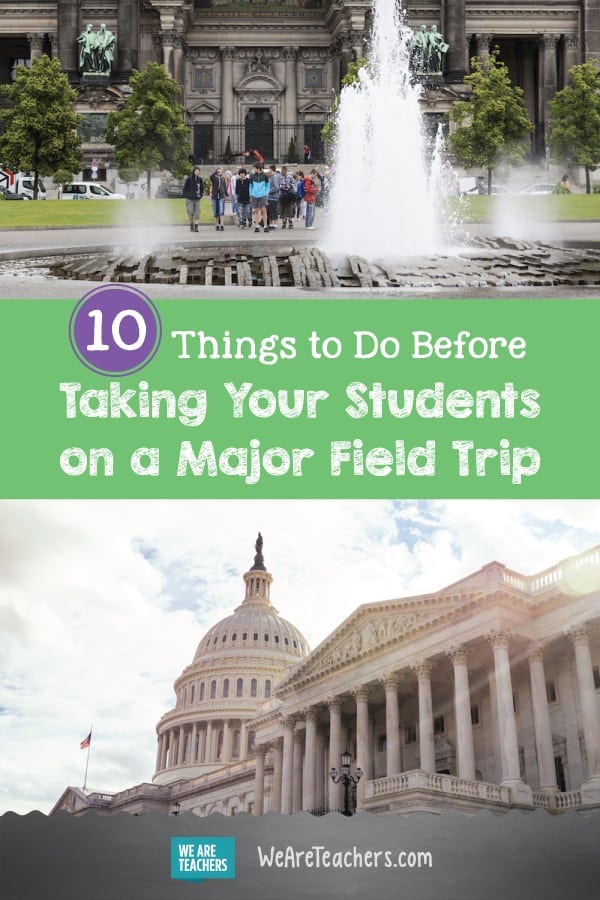
You Might Also Like
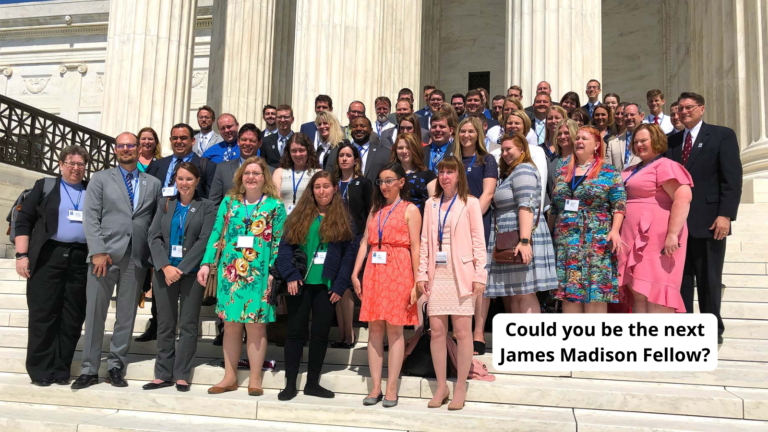
Calling All US History and Civics Teachers: This Foundation Wants To Help You Get Your Master’s Degree!
America’s most prestigious award in constitutional history and government for secondary teachers. Continue Reading
Copyright © 2024. All rights reserved. 5335 Gate Parkway, Jacksonville, FL 32256
School Programs
Money field trips.
These educational field trips are truly innovative and fun for the students as well as the teachers and parents.
Money Field Trip at the Mall Individual and team Money Missions teach students how to:
- Develop their own ideas of managing their shopping within a budget
- Shop around and ask the right questions to get the best deals
- Quickly calculate sale and promotional discounts
- Calculate the number of hours they would have to work to pay for certain items
Money Field Trip at the Bank What are banks and why do we need them? How does a bank make money? Students will also learn the differences between types of bank accounts offered including interest, fees, and accessibility (liquidity). They may visit the vault and understand the importance of maintaining important financial documents there as well as keeping copies at home. They will also learn the differences between ATM, Debit and Credit Cards.
Money Field Trip at the Supermarket At the supermarket, participants will be taught ideas of how to take advantage of sales, promotions, coupons and other discounts. They will learn the importance of unit cost and how to quickly calculate the best deal. The students will also learn what the average family spends on groceries per week and several ways to save money. If they help their family save $50 a week on grocery shopping and eating out one fewer time a week and have their parents invest the money saved, they could have over $1 million when they retire (at 65)!
Everyone has the potential to be a millionaire... You don't need a lot of money...You don't need to be a genius... But, you do need to start now!
Money Lessons for Life © 2024 | Home | Login | About Us | Contact Us | DVD Money Lessons | School Programs | Financial Tools Become a Sponsor | Money Tips | What People Are Saying | Take a Money Quiz | Money News | Site Map
All information obtained either verbally, written or otherwise from Money Lessons for Life™ is educational and should not be interpreted as financial advice. For advice that is specific to your needs and circumstances, you should consult a financial or tax adviser. developed by: Nerd Group | hosting by: Nerdy Hosting
The Money Museum is open 10 am to 5 pm, Monday through Friday, except on Federal Reserve Bank holidays .
Upcoming Changes to Regular Hours
The Money Museum will be closed on the following upcoming days:
- August 19, 20, 21, 22, 23
- September 2
The Money Museum will have reduced hours on the following upcoming days:
- June 20 – Open 10 am to 1 pm
Visit the Money Museum
Located downtown in Chicago’s financial district, the Chicago Fed’s Money Museum features a variety of exhibits focused on economics, money, and the roles of the Federal Reserve. Try your hand at detecting counterfeit notes, learn what a million dollars looks like, and view the rare currency on display. Reservations needed for groups of 15 people or more.
Special Exhibit: Honoring Black Baseball History
Featuring commemorative coins produced by the U.S. Mint. Now open through Spring 2025. Learn more .
Reservations
Museum entry costs nothing, and it is open to walk-in visitors with no reservation needed. If your group is 15 people or more, please make a group reservation.
The Money Museum is located on the first floor of the Federal Reserve Bank of Chicago at 230 South LaSalle Street, on the corner of Jackson Boulevard and LaSalle.
There is no parking in front of the Money Museum. Please make alternate parking arrangements.
Accessibility
The Federal Reserve Bank of Chicago is committed to making Money Museum exhibits and presentations accessible to everyone. Service animals are welcome at the Museum. The Museum is wheelchair accessible. (Wheelchairs are not provided.) The presentation video is captioned, and assistive listening devices may be requested by visitors on a first-come, first-served basis. If a group requires ASL interpretation for a presentation, please contact the Money Museum to place a request at least two weeks prior by emailing [email protected] .
Photo ID requirement
All adult visitors 18 years and older must show a valid, government-issued photo ID before entering the Money Museum.
Security Screening
All individuals visiting the Money Museum will be subject to the Federal Reserve Bank of Chicago's screening process. The following items are not allowed in the Museum. This includes, but is not limited to:
- Firearms, stun guns, knives (including large pocket knives), utility/box cutters
- Pepper spray or mace
- Illegal drugs
- Other illegal or potentially dangerous or destructive items
At no time are firearms allowed into the Museum regardless of concealed carry status. Individuals may not store them and will be asked to leave the premises.
Food and Beverage Policy
We ask for your help in maintaining our facility. Please refrain from consuming food and beverages in the Money Museum. For your convenience, a drinking fountain is located outside the washrooms.
Group Visits
Student groups.
The Money Museum is most appropriate for middle and high school students. Museum staff members are not able to accommodate reservations for student groups under sixth grade. Student groups are required to have at least one adult chaperone for every ten students aged 17 or younger. Reservations are required for student groups with 15 or more attendees. If you do not have a reservation, your group may be turned away if the museum is at capacity.
Read about nearby attractions for additional stops on your field trip.
Teachers, here are resources for your middle and high school classrooms .
Reservations are required for groups of 15 or more people. A student group visit or other group visit lasts one hour and consists of a presentation by a staff member in the Money Museum auditorium for 30 minutes, followed by exploration on your own in the exhibition for 30 minutes. During the presentation, you will hear from a Chicago Fed staff member about the roles of the Federal Reserve, watch a video, and participate in a Q&A. If you prefer your group to explore the exhibits on your own rather than receive a presentation, please indicate this in the "Notes" field of your reservation request.
Student or community group reservations are offered Tuesday through Friday at 10am, 11am, 12pm, 1pm, 2pm, and 3pm.
- Region & Community
- Style Guide
Federal Reserve Bank of Chicago, 230 South LaSalle Street, Chicago, Illinois 60604-1413, USA. Tel. (312) 322-5322
Copyright © 2024. All rights reserved.
Please review our Privacy Policy | Legal Notices

Fun and Engaging Ways to Raise Money for School Field Trips
1. themed costume day.

2. Carnival or Fun Fair

3. Dance-a-Thon

4. Trivia Night

5. Art Auction

6. Cook-Off Competition
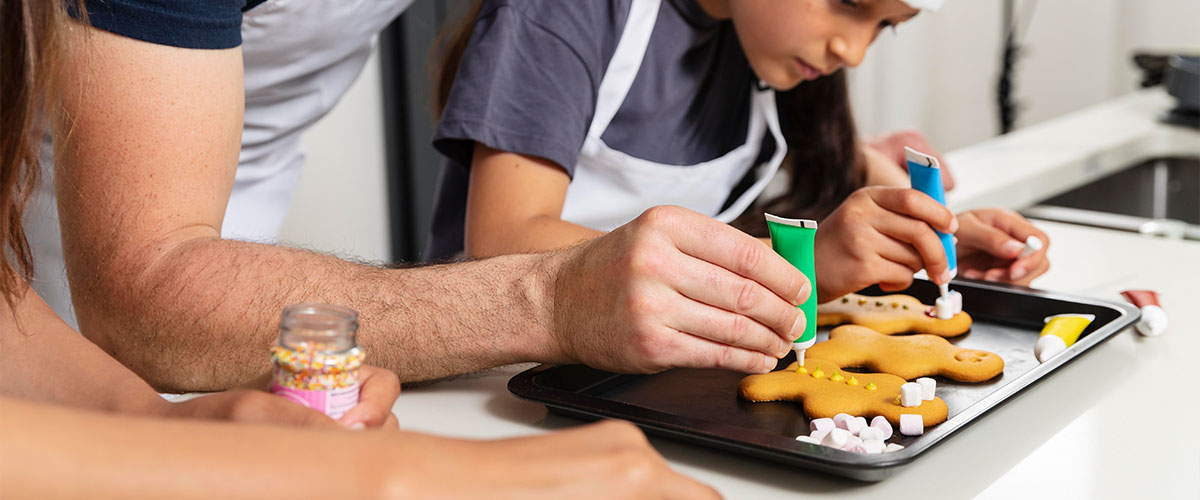
7. School Sleepover

8. Shoe Drive Fundraiser
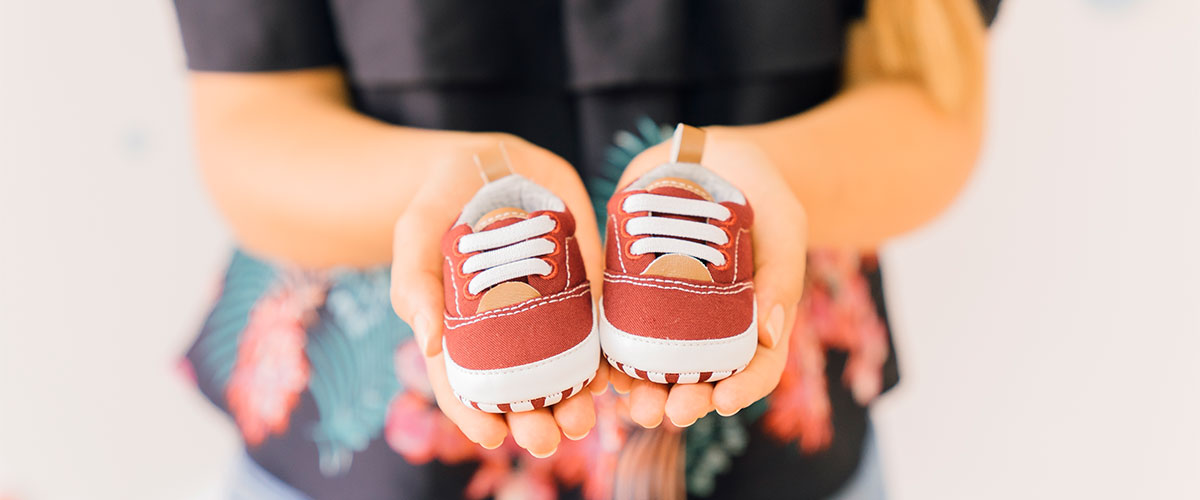
Bottom Line

Welcome to {{::representativeCtrl.Representative.Name}}'s store
The Enlightened Mindset
Exploring the World of Knowledge and Understanding
Welcome to the world's first fully AI generated website!
What is a Field Trip: Exploring the Benefits, Challenges, and Creative Ideas
By Happy Sharer

Introduction: What is a Field Trip?
A field trip is an educational excursion outside of the classroom environment. It is an opportunity for students to gain first-hand experience with the material they are learning in class. Field trips can take place at local attractions, museums, historic sites, nature centers, and more. They can also be conducted virtually, allowing students to explore faraway places without ever leaving the classroom.
Overview of Field Trips: Exploring the Benefits and Challenges
Field trips are an important part of any school curriculum. They provide an opportunity for students to gain real-world experience with the material they are learning in class. However, there are both benefits and challenges associated with field trips that must be considered before planning one.
Benefits of Field Trips
The most obvious benefit of field trips is that they give students the chance to experience the material they are learning in class in a real-world setting. According to a study conducted by the National Education Association, “Field trips provide students with experiences that cannot be replicated in the classroom. They offer opportunities to explore concepts from a different perspective, to observe firsthand what has been read about in textbooks, and to make connections between course content and real life.”
In addition to providing an opportunity for experiential learning, field trips can also help to engage student interest in the subject matter. A study conducted by the University of Texas found that students who went on field trips were more likely to remember the material they had learned than those who did not go on the trip. Furthermore, field trips can spark curiosity and inspire students to ask questions and seek out further knowledge.
Challenges of Field Trips
Despite their many benefits, field trips can present some challenges. One of the biggest challenges associated with field trips is the cost. Depending on where you are traveling and the size of your group, the expenses can quickly add up. Additionally, finding the time to plan and execute a successful field trip can be difficult for teachers who already have a full schedule.
Safety is another issue that must be taken into consideration when planning a field trip. It is important to ensure that all students are supervised at all times and that the destination is appropriate for the age and maturity level of the students.
Tips for Planning a Successful Field Trip
Planning a successful field trip requires careful consideration of multiple factors. Here are some tips to keep in mind when planning a field trip.
Establish Goals
Before planning a field trip, it is important to establish clear goals. Ask yourself why you are taking the students on the trip and what you hope to accomplish. This will help to ensure that the field trip is meaningful and relevant to the material being taught in class.
Choose an Appropriate Destination
Once you have established your goals, it is important to choose a destination that is appropriate for the age and maturity level of the students. When selecting a location, consider the interests and abilities of the students and make sure that the destination offers something that will be interesting and engaging for them.
Develop an Itinerary
Once you have selected a destination, it is important to develop an itinerary that outlines the activities for the day. Make sure there is enough time for each activity and that the activities are relevant to the goals you have established for the trip.
Manage Safety Issues
Safety should always be a top priority when planning a field trip. Make sure that all students are supervised at all times and that the destination is appropriate for the age and maturity level of the students. Additionally, be sure to review any safety policies or procedures with the students prior to the trip.
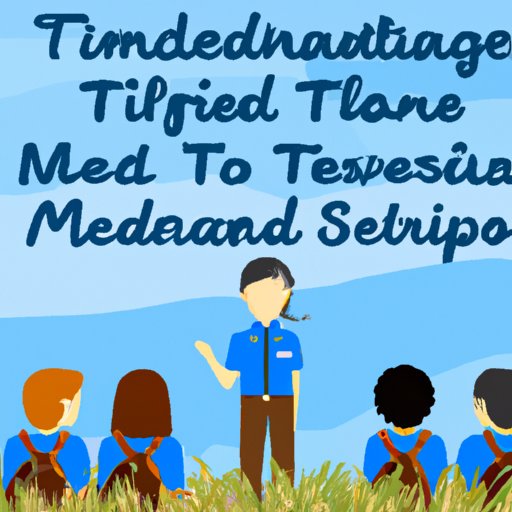
A Guide to Creating a Meaningful Field Trip Experience
Creating a meaningful field trip experience requires careful planning and preparation. Here are some tips to ensure that your students get the most out of their field trip.
Set Clear Expectations
Prior to the field trip, it is important to set clear expectations for the students. Explain to them the purpose of the trip and what you hope they will gain from the experience. Additionally, discuss any rules or guidelines that need to be followed during the trip.
Make Connections with Course Material
When planning the activities for the field trip, look for ways to connect the material to the course content. This will help to ensure that the students gain a deeper understanding of the material and that the trip is meaningful and relevant.
Utilize Time Wisely
Time management is key to ensuring a successful field trip. Make sure that all activities are planned in advance and that the students understand what is expected of them. Additionally, leave room for flexibility in case something unexpected arises.
How Field Trips Enhance Learning in the Classroom
Field trips can be an invaluable tool for enhancing learning in the classroom. Here are some of the ways that field trips can benefit students.
Engaging Student Interest
Field trips can help to engage student interest in the subject matter. Experiencing the material firsthand can make it easier for students to understand and relate to the material being taught in class.
Building Critical Thinking Skills
Field trips can also help to build critical thinking skills. Students are exposed to new information and must process it in order to gain a better understanding of the material. This helps to develop problem-solving abilities and encourages students to think more deeply about the material.
Developing Problem-Solving Abilities
Field trips can also help to develop problem-solving abilities. Students are exposed to new environments and must find ways to navigate them. This helps to build confidence and teaches students how to think on their feet.
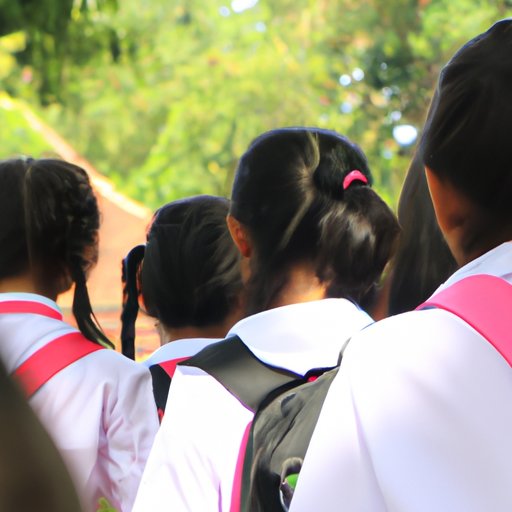
The Value of Field Trips for Students
Field trips can be a valuable learning experience for students. Here are some of the ways that field trips can benefit students.
Developing Self-Confidence
Field trips can help to boost self-confidence. Being in unfamiliar surroundings can be intimidating, but it can also be a great opportunity for students to practice problem-solving skills and develop self-confidence.
Strengthening Interpersonal Relationships
Field trips can also help to strengthen interpersonal relationships among students. Working together to navigate new environments and solve problems can help to foster teamwork and collaboration.
Acquiring New Knowledge and Experiences
Finally, field trips can open students up to new knowledge and experiences. Seeing things firsthand can help to bring the material to life and make it easier for students to understand and remember.
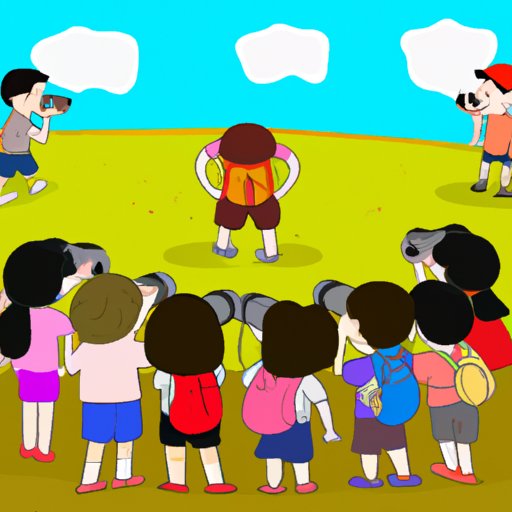
Creative Ideas for Field Trips
There are many creative ways to incorporate field trips into the classroom. Here are some ideas for fun and engaging field trips.
Museum Visits
Museums are a great way to introduce students to a variety of topics. From art and history to science and technology, there are a variety of museums that offer educational experiences for students of all ages.
Local Attractions
Local attractions can be a great way to introduce students to the community and its culture. Consider visiting historical sites, parks, zoos, or aquariums for an interactive and fun learning experience.
Nature Walks
Nature walks are a great way to get students outdoors and exploring their natural surroundings. Not only can this be a fun activity, but it can also be a great way to introduce students to concepts such as ecology and conservation.
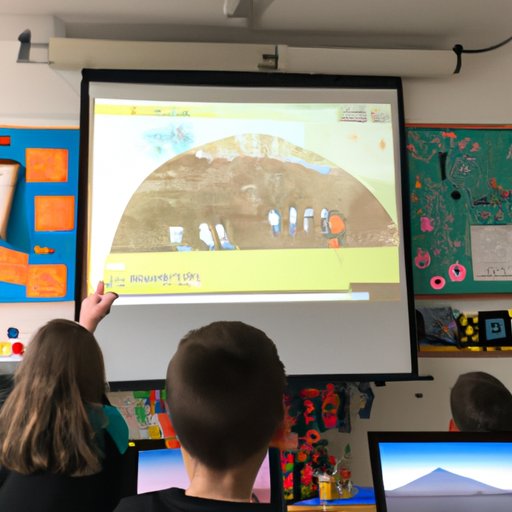
Virtual Field Trips: Taking Education Beyond the Classroom
Technology has opened up a world of possibilities for educators looking to take their students on field trips. Virtual field trips allow students to explore faraway places without ever leaving the classroom.
Advantages of Virtual Field Trips
Virtual field trips come with a number of advantages. They are often less expensive than traditional field trips, and they can be used to explore destinations that would otherwise be inaccessible. Additionally, virtual field trips can be tailored to fit the curriculum and the specific needs of the students.
Types of Virtual Field Trips
There are a variety of types of virtual field trips available. These include virtual tours of museums and historical sites, live video streams of events, and interactive simulations of different environments. Each type of virtual field trip offers a unique experience and can be used to enhance learning in the classroom.
Tips for Planning a Virtual Field Trip
When planning a virtual field trip, it is important to do your research. Check to see if the destination offers a virtual tour and make sure that the technology needed is available and easy to use. Additionally, make sure to set clear expectations and goals for the virtual field trip and to create an itinerary that outlines the activities for the day.
Field trips can be a valuable learning experience for students. They provide an opportunity for students to gain first-hand experience with the material they are learning in class and can help to engage student interest in the subject matter. Additionally, field trips can help to build critical thinking skills and develop problem-solving abilities. Finally, virtual field trips offer an exciting way to explore faraway places without ever leaving the classroom. With careful planning and preparation, field trips can be a fun and educational experience for everyone involved.
(Note: Is this article not meeting your expectations? Do you have knowledge or insights to share? Unlock new opportunities and expand your reach by joining our authors team. Click Registration to join us and share your expertise with our readers.)
Hi, I'm Happy Sharer and I love sharing interesting and useful knowledge with others. I have a passion for learning and enjoy explaining complex concepts in a simple way.
Related Post
Exploring japan: a comprehensive guide for your memorable journey, your ultimate guide to packing for a perfect trip to hawaii, the ultimate packing checklist: essentials for a week-long work trip, leave a reply cancel reply.
Your email address will not be published. Required fields are marked *
Expert Guide: Removing Gel Nail Polish at Home Safely
Trading crypto in bull and bear markets: a comprehensive examination of the differences, making croatia travel arrangements, make their day extra special: celebrate with a customized cake.
- Rating Count
- Price (Ascending)
- Price (Descending)
- Most Recent
Field trip money collection form
Resource type.

Field Trip Roster Money Collection Form

Field Trip Collection Form ( Money & Permission Slips)

Automatic Calculation Field Trip Money Collection Sheet

Field Trip Packet - All the Forms You Need

Field Trip Planning Kit (Now Editable!)

Field Trip Binder & Forms (EDITABLE)

Money Collection and Organization Notes

Editable Field Trip Organization Spreadsheet

Field Trip Planner Templates Editable

Fees Money Tracking Chart - Field Trip Picture Thanksgiving Christmas Collection

Fieldtrip form

Field Trip Check-in Chart for Teacher Binder

Editable Year Round Forms - Add on Pack

Back to school classroom forms organizational forms for teachers at open house

Teacher Chart Collection


Field Trip Money and Permission Slip Collection

Science and Math Kids Clip Art Collection for Teachers - 11 Download Bundle

Zoo Field Trip Adventure Guide -- Free! -- Field Trip Resource

Bookkeeper Money Collection

Virtual Field Trip Variety Value Bundle | Computer Enrichment Activities

Teacher Stationery – Coordinates with Book Smart Owls Classroom Theme

Calculating Tip Task Cards

- We're hiring
- Help & FAQ
- Privacy policy
- Student privacy
- Terms of service
- Tell us what you think
You are using an out of date browser. It may not display this or other websites correctly. You should upgrade or use an alternative browser .
Field trip money
Discussion in ' Debate & Marathon Threads Archive ' started by Ponypal , Jan 21, 2014 .
JustMe Virtuoso
Jan 21, 2014
Go Blue! said: ↑ This is unreasonable and not fair to the kids who want to go more expensive places like theme parks. Especially since these are incentive trips. Click to expand...
kpa1b2 Aficionado
As an elementary teacher I cannot imagine leaving a child behind because they couldn't afford to pay! It is our policy that every child should be able to go on the field trips. We've worked with families. We've had sets of twins where the parent can't afford to send both, we've covered the cost of one child. We've covered the cost of a parent who can't afford to send one child. A child shouldn't be punished because of the family finances. As a middle schooler or high schooler my son has participated in several field trips that are educational, but not required, more along the lines of extension activities. On those trips, there is usually a limit to how many students they will take. Those trips have almost always been in the range of $100 or more.
Go Blue! Connoisseur
JustMe said: ↑ GO WITH MOMMY AND DADDY. Gosh, I'm so frustrated. Apologies for the caps. I use those sparingly. Click to expand...
Go Blue! said: ↑ The kids get excited about these trips because its a chance to hang out with their friends. Due to many issues, many of our kids do not get to see their school friends outside of school unless they live in the same neighborhood (or their parents let them ride the bus around town). Our kids love and look forward to these types of trips. Also, some of these places are $60+ for admission so a family of four would spend almost $250 to simply get into the park. And, many of my students' families would not have proper transportation to get there. Telling them to go with their family would make us look crazy. Click to expand...
gr3teacher Phenom
Go Blue! said: ↑ This is unreasonable and not fair to the kids who want to go more expensive places like theme parks. Especially since these are incentive trips. What about kids who have to stay behind because of poor behavior? They don't have to go, right? Click to expand...
gr3teacher said: ↑ With that said, if my district would allow an amusement park as a field trip, I would absolutely not schedule it unless I knew that every child in my room had the opportunity to go, because I will NOT punish one (or two, or five, or...) child for their parents not having enough money. Click to expand...
I'm not allowed to use behavior in regards to field trips. Unless a student is suspended from school, they are allowed to go on a field trip. I've told parents that they should come if at all possible, and I've arranged for a "time out" situation for a kiddo that can't handle the field trip.
Go Blue! said: ↑ To each their own, I guess ... I guess it's good we don't work together, either. Click to expand...
Go Blue, you've said to two people tonight that it's good you don't work with us. You do realize, I hope, people who disagree--even passionately--can still work together and even be friends. Right?
gr3teacher said: ↑ .... and I've arranged for a "time out" situation for a kiddo that can't handle the field trip. Click to expand...
iteachbx Enthusiast
Go Blue! said: ↑ So if you plan a trip the kids are looking forward to and 30 or 20 out of 100 can't afford to go - you just cancel the trip? Really? That's unfair. Or do you expect teachers to pay for it? Also, what about kids that can't go because of poor behavior? You are ok with them staying behind? Click to expand...
i8myhomework said: ↑ I feel a lot how you do and I feel that it is unfair. Truthfully, I have never been in a situation where one of my students could not participate in something due to finances. If that were the case I'm sure I would do my best to figure out a solution. I'd probably just pay. The part we disagree on is the "If some go, we all should go" mentality. That's not how life is. Same when other students whine because "Suzy has a Hello Kitty notebook and I don't. I have a plain one." Well, what is the solution? Some mommy and daddies have money. Some don't. Some kids miss out on activities, some don't. I'm not trying to be harsh. Honestly. I don't think it's right but it is what it is. Please give five year olds more credit. They can realize and understand a lot more than you think they can. Click to expand...
2ndTimeAround Phenom
gr3teacher said: ↑ I'm not allowed to use behavior in regards to field trips. Unless a student is suspended from school, they are allowed to go on a field trip. I've told parents that they should come if at all possible, and I've arranged for a "time out" situation for a kiddo that can't handle the field trip. Click to expand...
2ndTimeAround said: ↑ Wow. Thankfully my district doesn't believe this way. Students can certainly (and are) be held back from a field trip due to behavior. And they lose any money they may have already paid toward the trip. Click to expand...
gr3teacher said: ↑ Keeping a student back from a field trip would be like having them sit in the hall during social studies classes. All our field trips have to be tied to the curriculum. Click to expand...
yellowdaisies Fanatic
YoungTeacherGuy said: ↑ This! Here in my district, we may not exclude anyone who can't afford to pay! We offer fundraising opportunities and if the grade-level doesn't raise enough funds for the trip, teachers ask for parent donations (normally a buck or two). Even if a child doesn't bring in their dollar, they're still allowed to go (as it should be). I feel very, very strongly that students should not be excluded due to parents not being able to pay. Either everyone goes or no one goes (in my humble opinion). Thankfully, my district feels the same way I do. Click to expand...

Major Connoisseur
This was a fun thread to read ......
czacza Multitudinous
Our PTO kicks in $10 per kid per year for field trips...that really helps keep the cost down! I'm sure our board office (or PTO again) would pick up the fees for a kid who couldn't pay. Teachers generally have their cost rolled into the total cost of trip which is broken down to a per kid cost.
teacherintexas Maven
I've never had a student not be able to go on a field trip due to not paying. The school has always made up the difference. Our field trips have always been tied to curriculum. There was a kid who wasn't allowed to go since he was a runner and the mom wouldn't go with him, but that's a bit different. I did refuse to pitch in for a kid once. It wasn't for a field trip, but to have pizza at a party. The party was after lunch, but for some reason, we ordered pizza for those who wanted it. There were several kids from all different income levels that didn't want pizza, so not getting it was not really a big deal. The reason I didn't pitch in for one kid was I overheard his mom tell him right outside the door to "tell the teacher to pay for you. I have to go get my nails done." Um, no. He went without pizza. I might have felt differently if I could afford to go get my nails done.
2ndTimeAround said: ↑ Wow. Thankfully my district doesn't believe this way. Students can certainly (and are) be held back from a field trip due to behavior. Click to expand...

HistoryVA Devotee
I actually don't think schools should be wasting time/money on non-academic field trips anyway, regardless of whether or not students pay for themselves. What a waste a trip to a theme park is! Theme parks are for personal time. All field trips should be curriculum-based. Museums, theatre, parks, something that directly relates to what is being learned in class.
dgpiaffeteach Aficionado
Theme parks can be great for physics.
dgpiaffeteach said: ↑ Theme parks can be great for physics. Click to expand...

Ponypal Comrade
I never meant to upset anyone. I'm sorry. I'll try the PTA next for money for this child. It's been a few years since I've gone on this trip due to switching grade levels, but I'll call ahead and see if they can drop the teacher admission fee. Thank you everyone.
Ponypal said: ↑ I never meant to upset anyone. I'm sorry. I'll try the PTA next for money for this child. It's been a few years since I've gone on this trip due to switching grade levels, but I'll call ahead and see if they can drop the teacher admission fee. Thank you everyone. Click to expand...
i8myhomework Comrade
iteachbx said: ↑ The difference is the SCHOOL didn't send her out get the hello kitty notebook. The school didn't send home reminders about the hello kitty notebook. The school didn't send her off to play with the hello kitty notebook all day while the other kid sat with his plain notebook. The school didn't discuss "well remember what we learned from the hello kitty notebook" while the other kid sat there looking at their plain notebook. Click to expand...

HistoryVA said: ↑ All field trips should be curriculum-based. Museums, theatre, parks, something that directly relates to what is being learned in class. Click to expand...
Why is it worthy of an eye roll to suggest that field trips should be curriculum-based? I guess I attended the wrong district because it was never the school's responsibility to see to it that I got to enjoy fun trips with my friends unrelated to learning. I'm kind of still experiencing bit of shock at some of the ideas shared in this thread...
MissScrimmage Aficionado
Our field trips must be curriculum based and reasonably priced. Our PTA chips in $3.50 per child and then they pay the difference. If there was a child that could not afford to come, the PTA would cover that cost as well. Field trips are an extension of our learning and my 6-year-old students should not miss out on these experiences because of a couple of dollars that they have NO control over. Most places we go to for field trips let chaperones in for free because they want to encourage lots of adult supervision.
Go Blue! said: ↑ If you say so. Click to expand...
Tyler B. Groupie
Jan 22, 2014
JustMe said: ↑ NO CHILD SHOULD NOT BE ALLOWED TO GO BECAUSE THEY CANNOT AFFORD IT. Click to expand...
scholarteacher Connoisseur
Our school is against kids staying back, for educational reasons. We ask the parents to send the permission slip and as little as $1.00, and we still don't hear back from them. We send home 3-4 slips, notes, and make 2-3 phone calls, leaving messages if needed, and they still don't respond. We see the moms come in with new hairdos and manicures, and the kids talking about new video games, and we tell them we'll help pay, but many still don't respond. Pride, maybe?
TeacherNY Maven
I would never pay a dime out of my own pocket for a school related trip unless I wanted to buy soveniers or something while on the trip. I'd rather cancel the trip than pay for a student's ticket. That's just inexcusable. If the parents AND/OR the school aren't expected to pay why should we???
JustMe said: ↑ I had to laugh at this because when we went to a theme park back in high school it was also "for physics". :lol: Click to expand...
sue35 Habitué
dgpiaffeteach said: ↑ My 6th grade class went. We had a huge packet we had to complete while there. It definitely wasn't just a fun day. Though I certainly wish it had been. I took my club to a leadership seminar field trip. There were only so many allowed to attend from each school so a few went from my club (officers) and the officers from another club. It didn't bother me. Click to expand...
If a child couldn't afford the field trip, we wouldn't be going. Field trips are fun but not necessary. If I couldn't get the funds for the student, I wouldn't go. I can't imagine being one of a handful that is left behind due to money.
We had a packet to do as well...but didn't have to turn it in. So... And now that I think about it, this was in middle school. It was definitely a fun day.
Share This Page
Members online now.

Best Back to School Ideas 🍏

11 Field Trip Hacks to Save Your Sanity
Share this post:.

Oh, springtime! The time when inside recess starts to become a memory of the past, and the weather is finally warm enough for a field trip! If you’re planning a field trip this school year, then you know that they come with massive amounts of stress… But today’s post is meant to put you at ease! These 11 field trip hacks are perfect for saving your sanity this field trip season!

Please note this post contains affiliate links. If you follow my links, please know that I make a very small commission from your purchase. There is no cost to you, but this extra coinage allows me to continue creating free resources and writing awesome content for you!
Hack #1- Tentative Schedule
This is my top hack because it really does help relieve some major stress associated with field trips! Having a tentative schedule that outlines what you’ll be doing, and when and where things take place will help you plan for the day. It can be as straightforward or as complicated as you like.
But, I suggest your schedule includes the following information:
- Leave and return times
- Lunch/snack times
- Important event times
- suggested bathroom breaks
And don’t forget to share the tentative schedule with every adult attending the field trip!
Hack #2 Field Trip Checklist
Collecting money, forms, and chaperone requests can get a bit unruly for 20+ students. Use a checklist to keep yourself organized as to who’s going, who paid, and who signed up to be a chaperone.
Things I keep track of:
- Permission slip form turned in
- Field trip money
- Chaperone request (and approved!)
- Chaperone money
- Bringing a lunch from school or home
Keep this checklist in a designated field trip folder along with the forms and any other important information. You’ll be glad to keep it all in one place!
Hack #3- No Teacher Group
Ok… so this next hack is one that I feel is important, but I know sometimes available chaperones are limited. But if you can… don’t assign yourself a group. I’ve done field trips both ways: with and without a group, and let me tell you… it is so much better for you and your students if you do not have a group.
This leaves you free to handle paperwork, count students, and address behavior/medical issues as they arise without slighting your students from the field trip experience. Believe me; there is nothing worse than having to review and sign paperwork/buy tickets/talk to the coordinators while a group of students stares on longingly at their friends enjoying the day.
Hack #4-Count and Count Again
This one is for the field trip day and can help relieve a ton of stress and anxiety about losing a student. Before leaving, get a head count (number of students and adults).
As a bonus, count the number of people on your bus. So if you and another teacher share a bus, have them count, and you also count. Don’t leave the school or your field trip location until you’ve confirmed EVERYONE is accounted for!
Hack #5-Exchange Digits
Before leaving for the field trip, be sure to collect your chaperones’ information, including their cell phone numbers. Also, give them yours. This will help you when you’re split up through the day, and the chaperones can reach you if there’s an emergency or an issue (like a delay because of a bathroom break!). If you’re uncomfortable sharing your phone number, you can sign up for a Google Number here!
Hack #6- Lunches in a Gallon-Sized Baggie
This next tip will save you time and trash! Put lunches in gallon-sized baggies. This helps the lunches lay flat, maximizing space in the cooler. And bonus – the baggie serves as a trash bag when students are done.
To do this, I send home a field trip reminder/information letter with the baggie attached a few days before the trip. I also included that if students requested lunch from the cafeteria, they could return the baggie. On the day of the field trip, be sure to label the lunches with the students’ names and put them in the cooler. This is a perfect job for a chaperone to do!
Hack #7- Extra Lunch
If you can, order an extra lunch from the cafeteria. You never know who might drop, forget, or lose a lunch on the way. It’s happened before, and this saves you from having to try and buy lunch at your location. (If that’s even available!) If no one needs the extra lunch, pass out the meal to students who are still hungry.
Hack #8- Field Trip Information Sheet
There are so many details you need to have with you on the day of your field trip. I like to keep it all in one place and use a field trip information sheet.
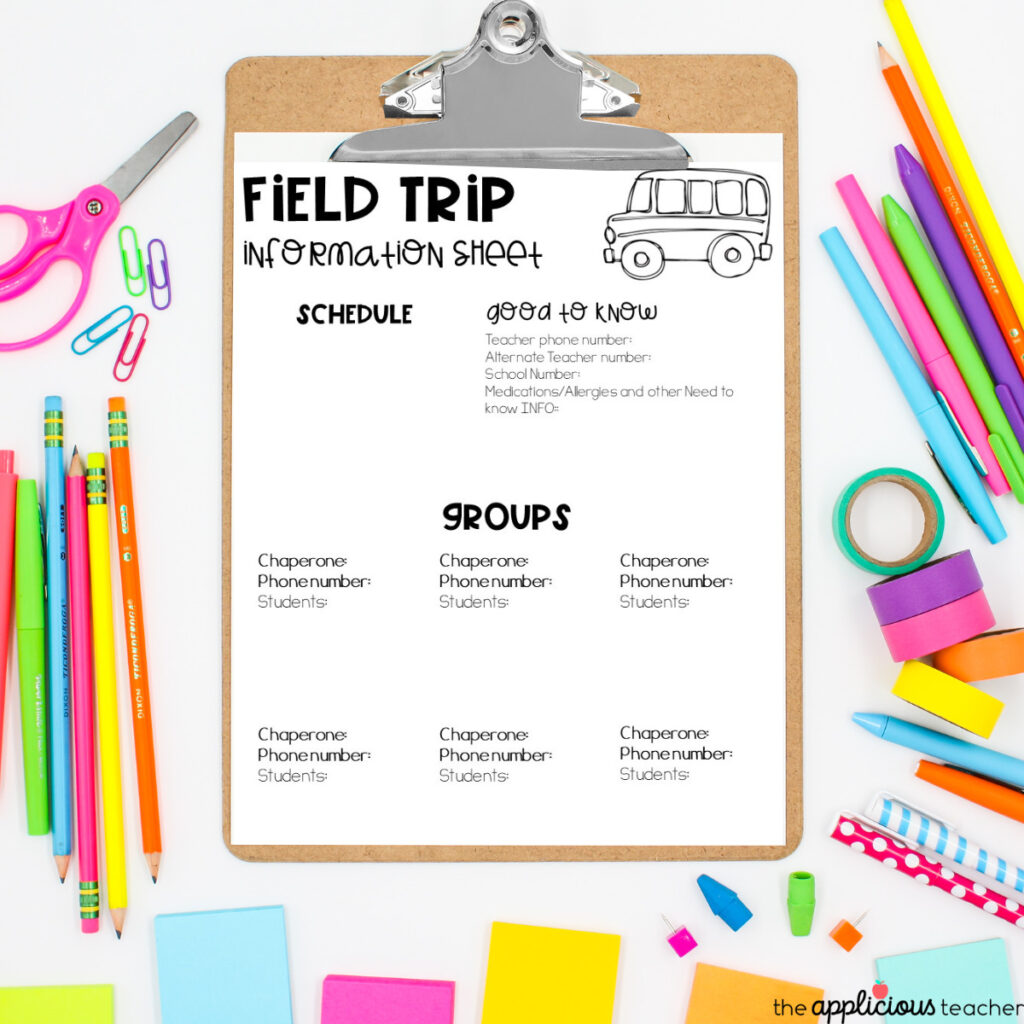
Things to put on the field trip information sheet:
- Tentative schedule
- Contact information for the school, yourself, and another teacher who is on the field trip
- Groups/Chaperones
- Chaperone information
- Any allergies/medications- HIPPA requires you keep this information as private as possible, but of course, during a field trip, the chaperones NEED to know if there is a health issue to be concerned about (ie: allergic to bee stings and has an epi-pen). Even better- if a student does have life-threatening health concerns, ask the parent/guardian to chaperone the field trip.
Once you’ve made your information sheet, print out copies for yourself, your chaperone, and the office. Now everyone is on the same page.
Want a field trip form that’s done for you? This one is a free download in The Applicious Resource Library. Sign up at the bottom of this post!
Hack #9- Snacks
I’m not sure what it is… but I have hungry kids this year! We brought snacks for both field trips, and they were a LIFE saver! I asked parents to donate some water bottles, granola bars, and pretzels, but anything could work!
If students walk around with their chaperones, gather enough snacks for each group and place them in a gallon-sized bag. Then, chaperones can divvy out snacks throughout the day.
Hack #10- Eat a Snack Before You Leave
This one goes with hack #9. If you leave a bit later in the morning (after 9:00), having students eat a bite before you go is a good idea.
Ask parents to send in granola bars or crackers with peanut butter (if no students with allergies). You want to ward off the “I’m hungry” hours before lunchtime.
Hack #11- Bring a backpack
For the day of the trip, bring a backpack. This will serve as your mini-classroom on your back. This one from Vera Bradley is a favorite of mine! The durable material, number of large zippered pockets, and side pockets make it a teacher’s dream!
Fill it with the following:
- Bandaids or first aid kit
- Hand sanitizer ( spray kind is my new favorite for on-the-go!)
- Cell phone (and a power bank if you’re going to be gone all day)
- water bottle
- headache medicine for teacher
- personal items like wallet, keys, lady items
- student medications and forms
- a folder with any required documents/forms
- Your field trip information sheet.
- Don’t forget a pen or two to write down the headcount before you head out the door and board the bus!
11 Hacks for a Stress-Free Field Trip
Well, those are my top 11 best tips for a mostly stress-free day! Remember, a field trip is meant to be fun, so be sure to prep your students and get yourself ready! The more prepared you are, the less stressed you’ll be on the day of!
Want to grab a free field trip information sheet? Sign up below!

- Categories: 2nd Grade , Classroom

Hi, I'm Leigh.
The Applicious Teacher is all about creating hands-on and engaging lessons that align with the standards while still having time for your life. This is your place for ideas, tips, and resources for the REAL teacher!

Recent Posts

Popular in the Store

You may also enjoy...
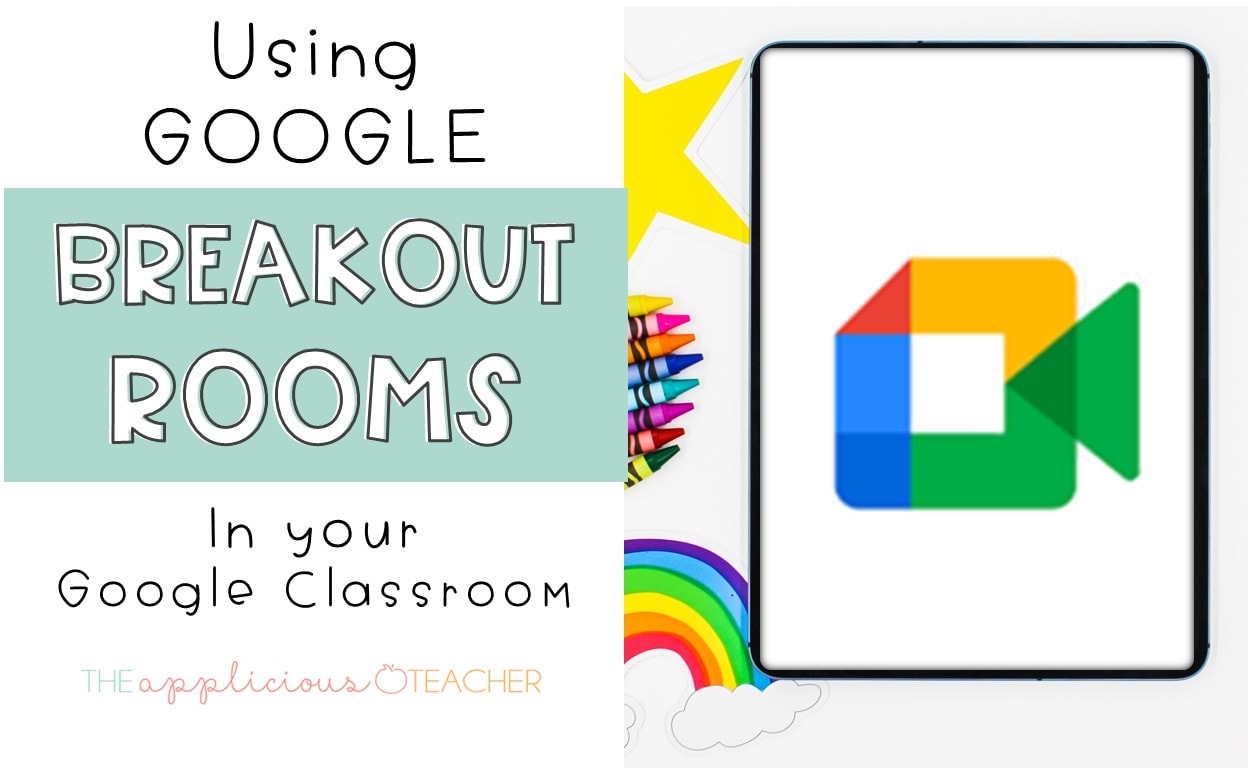
Using Google Breakout Rooms in Your Digital Classroom

The Secret to Making Your Centers Last All Year: Back-to-School Edition

A Few of Our Favorite Things… GIVEAWAY!

Gearing up for the end of the year… ARE WE THERE YET?!?
© 2021 The Applicious Teacher. All Rights Reserved
Designed by Ashley Hughes
Use of Cookies
Privacy overview.
- Meet the Team
- Our Manifesto
- Work with Us
- Budget Travel
- Personal Development
- Work & Travel
- United Kingdom
- More of Europe
- Philippines
- More of Southeast Asia
- More of South America
- More of Central America
- South Korea
- More of Asia
- More of North America
- New Zealand
- Pacific Islands
- More of Oceania
- South Africa
- More of Africa
- More of the Middle East
- Travel Essentials
- Travel Gear
Home » Europe » Moscow
EPIC MOSCOW Itinerary! (2024)
Moscow is the heart of Mother Russia. Just the mention of this city conjures images of colorful bulbous pointed domes, crisp temperatures, and a uniquely original spirit!
Moscow has an incredibly turbulent history, a seemingly resilient culture, and a unique enchantment that pulls countless tourists to the city each year! Although the warmer months make exploring Moscow’s attractions more favorable, there’s just something about a fresh snowfall that only enhances the appearance of the city’s iconic sites!
If you’re a first-time visitor to Moscow, or simply wanting to see as much of the city as possible, this Moscow itinerary will help you do just that!

Unlock Our GREATEST Travel Secrets!
Sign up for our newsletter and get the best travel tips delivered right to your inbox.
Best Time To Visit Moscow
Where to stay in moscow, moscow itinerary, day 1 itinerary in moscow, day 2 itinerary in moscow, day 3 and beyond, staying safe in moscow, day trips from moscow, faq on moscow itinerary.
Here is a quick look at the seasons so you can decide when to visit Moscow!
The summer months (June-August) are a great time to travel to Moscow to take advantage of the enjoyable mild temperatures. This is considered peak travel season. Bear in mind that hotel prices rise along with the temperatures!

The Broke Backpacker is supported by you . Clicking through our links may earn us a small affiliate commission, and that's what allows us to keep producing free content 🙂 Learn more .
If you’re planning a trip to Moscow during fall (September-November) try to plan for early fall. This way the temperatures will still be pleasant and winter won’t be threatening.
Russian winters (December-February) are not for the faint of heart as Napoleon learned to his peril. Some days the sun will be out for less than an hour, and snow is guaranteed. Although winters are exceptionally cold, this is when you’ll get a true glimpse of the Moscow experience!
The best time to visit Moscow is during spring (March-May). The temperatures will begin to creep up and the sun begins to shine for significant portions of the day. Hotel rates will also have yet to skyrocket into peak ranges!

With a Moscow City Pass , you can experience the best of Moscow at the CHEAPEST prices. Discounts, attractions, tickets, and even public transport are all standards in any good city pass – be sure invest now and save them $$$ when you arrive!
Moscow is a large city with many accommodation options to choose from. Staying in a location that fits with your travel plans will only enhance your Moscow itinerary. Here is a brief introduction to a few great areas of the city we recommend checking out!
The best place to stay in Moscow to be close to all the action is Kitay-Gorod. This charming neighborhood will put you within walking distance to Moscow’s famous Red Square, thus cutting down on travel time. This will allow you to see more of the city in a shorter amount of time!

It’s surrounded by restaurants, cafes, bars, and shops. If you’re a first-time visitor to Moscow, or just planning a quick weekend in Moscow, then this area is perfect for you!
Another great area to consider is the Zamoskvorechye district. This area of the city offers a blend of new and old Moscow. It has an artsy vibe and there are plenty of fun sites you can explore outside of the main touristy areas of Moscow.
Of course, as in all areas of Moscow, it’s close to public transportation that will quickly connect you with the rest of the city and make your Moscow itinerary super accessible!
Best Airbnb in Moscow – Exclusive Apartment in Old Moscow

Modern and cozy, this apartment is in the heart of Old Moscow. Bordering the Basmanny and Kitay-Gorod districts, this two-bedroom flat is walking distance to the Kremlin and Red Square. Safe, quiet, and comfortable, this is the best Airbnb in Moscow, no question!
Best Budget Hotel in Moscow – Izmailovo Alfa Hotel

The Izmailovo Alfa Hotel is a very highly rated accommodation that provides all the components necessary for a comfortable trip to Moscow. There is an on-site restaurant, bar, fitness center, and an airport shuttle service. The rooms are modern and spacious and are equipped with a TV, heating/air conditioning, minibar, and more!
Best Luxury Hotel in Moscow – Crowne Plaza Moscow World Trade Centre

If you’re touring Moscow in luxury, the Crowne Plaza Moscow World Trade Centre is the hotel for you! Elegantly furnished rooms are equipped with a minibar, flat-screen TV, in-room safes, as well as tea and coffee making facilities! Bathrooms come with bathrobes, slippers, and free toiletries. There is also an onsite restaurant, bar, and fitness center.
Best Hostel in Moscow – Godzillas Hostel

Godzillas Hostel is located in the center of Moscow, just a short walk from all the major tourist attractions and the metro station. Guests will enjoy all the usual hostel perks such as self-catering facilities, 24-hour reception, Free Wi-Fi, and security lockers. This is one of the best hostels in Moscow and its wonderful social atmosphere and will make your vacation in Moscow extra special!
An important aspect of planning any trip is figuring out the transportation situation. You’re probably wondering how you’re going to get to all of your Moscow points of interest right? Luckily, this sprawling city has an excellent network of public transportation that will make traveling a breeze!
The underground metro system is the quickest and most efficient way to travel around Moscow. Most visitors rely exclusively on this super-efficient transportation system, which allows you to get to pretty much anywhere in the city! It’s also a great option if you’re planning a Moscow itinerary during the colder months, as you’ll be sheltered from the snow and freezing temperatures!

If you prefer above-ground transportation, buses, trams, and trolleybuses, run throughout the city and provide a rather comfortable alternative to the metro.
Moscow’s metro, buses, trams, and trolleybuses are all accessible with a ‘Troika’ card. This card can be topped up with any sum of money at a metro cash desk. The ticket is simple, convenient, and even refundable upon return to a cashier!
No matter which method you choose, you’ll never find yourself without an easy means of getting from point A to point B!
Want to save money on accommodation?

We got you. For reals.
Red Square | Moscow Kremlin | Lenin’s Mausoleum | St. Basil’s Cathedral | GUM Department Store
Spend the first day of your itinerary taking your own self guided Moscow walking tour around the historic Red Square! This is Moscow’s compact city center and every stop on this list is within easy walking distance to the next! Get ready to see all of the top Moscow landmarks!
Day 1 / Stop 1 – The Red Square
- Why it’s awesome: The Red Square is the most recognizable area in Moscow, it has mesmerizing architecture and centuries worth of history attached to its name.
- Cost: Free to walk around, individual attractions in the square have separate fees.
- Food nearby: Check out Bar BQ Cafe for friendly service and good food in a great location! The atmosphere is upbeat and they’re open 24/7!
The Red Square is Moscow’s historic fortress and the center of the Russian government. The origins of the square date back to the late 15th century, when Ivan the Great decided to expand the Kremlin to reflect Moscow’s growing power and prestige!
During the 20th century, the square became famous as the site for demonstrations designed to showcase Soviet strength. Visiting the Red Square today, you’ll find it teeming with tourists, who come to witness its magical architecture up close!

The square is the picture postcard of Russian tourism, so make sure to bring your camera when you visit! No matter the season, or the time of day, it’s delightfully photogenic!
It’s also home to some of Russia’s most distinguishing and important landmarks, which we’ve made sure to include further down in this itinerary. It’s an important center of Russia’s cultural life and one of the top places to visit in Moscow!
In 1990, UNESCO designated Russia’s Red Square as a World Heritage site. Visiting this historic site is a true bucket-list event and essential addition to your itinerary for Moscow!
Day 1 / Stop 2 – The Moscow Kremlin
- Why it’s awesome: The Moscow Kremlin complex includes several palaces and cathedrals and is surrounded by the Kremlin wall. It also houses the principal museum of Russia (the Kremlin Armory).
- Cost: USD $15.00
- Food nearby: Bosco Cafe is a charming place to grat a casual bite to eat. They have excellent coffee and wonderful views of the Red Square and the Moscow Kremlin!
The iconic Moscow Kremlin , also known as the Kremlin museum complex, sits on Borovitsky Hill, rising above the Moscow River. It is a fortified complex in the center of the city, overlooking several iconic buildings in the Red Square!
It’s the best known of the Russian Kremlins – citadels or fortress’ protecting and dominating a city. During the early decades of the Soviet era, the Kremlin was a private enclave where the state’s governing elite lived and worked.
The Kremlin is outlined by an irregularly shaped triangular wall that encloses an area of 68 acres! The existing walls and towers were built from 1485 to 1495. Inside the Kremlin museum complex, there are five palaces, four cathedrals, and the enclosing Kremlin Wall with Kremlin towers.
The Armoury Chamber is a part of the Grand Kremlin Palace’s complex and is one of the oldest museums of Moscow, established in 1851. It showcases Russian history and displays many cherished relics. Definitely make sure to check out this museum while you’re here!

The churches inside the Moscow Kremlin are the Cathedral of the Dormition, Church of the Archangel, Church of the Annunciation, and the bell tower of Ivan Veliki (a church tower).
The five-domed Cathedral of the Dormition is considered the most famous. It was built from 1475–1479 by an Italian architect and has served as a wedding and coronation place for great princes, tsars, and emperors of Russia. Church services are given in the Kremlin’s numerous cathedrals on a regular basis.
The Grand Kremlin Palace was the former Tsar’s Moscow residence and today it serves as the official workplace of the President of the Russian Federation (Vladimir Putin seems to have bagged that title for life) .
Insider Tip: The Kremlin is closed every Thursday! Make sure to plan this stop on your Moscow itinerary for any other day of the week!
Day 1 / Stop 3 – Lenin’s Mausoleum
- Why it’s awesome: The mausoleum displays the preserved body of Soviet leader Vladimir Lenin .
- Cost: Free!
- Food nearby: Khinkal’naya is a charming Georgian restaurant with vaulted ceilings and exposed brick. It’s a popular place with locals and right next to the Red Square!
Lenin’s Mausoleum, also known as Lenin’s Tomb, is the modernist mausoleum for the revolutionary leader Vladimir Lenin. It’s located within the Red Square and serves as the resting place for the Soviet leader! His preserved body has been on public display since shortly after his death in 1924.
It’s located just a few steps away from the Kremlin Wall and is one of the most controversial yet popular Moscow attractions!
Admission is free for everyone, you’ll only need to pay if you need to check a bag. Before visitors are allowed to enter the mausoleum, they have to go through a metal detector first. No metal objects, liquids, or large bags are allowed in the mausoleum!

Expect a line to enter the building, and while you’re inside the building, you’ll be constantly moving in line with other visitors. This means you won’t be able to spend as long as you’d like viewing the mausoleum, but you’ll still be able to get a good look. Pictures and filming while inside the building are strictly prohibited, and security guards will stop you if they see you breaking this rule.
The mausoleum is only open on Tuesday, Wednesday, Thursday, and Saturday – unless it’s a public holiday or a day scheduled for maintenance. The hours it’s open for each day are limited, make sure to check online before you visit to make sure you can fit this into your Moscow itinerary for that day!
Insider Tip: The Lenin’s Museum is there for people to pay their respect; remember to keep silent and move along quickly, it’s not intended for people to congregate around. Also, men are not allowed to wear hats and everyone must take their hands out of their pockets when inside the building.
Day 1 / Stop 4 – St. Basil’s Cathedral
- Why it’s awesome: A dazzling designed cathedral that showcases Russia’s unique architecture. This cathedral is one of the most recognizable symbols of the country!
- Cost: USD $8.00
- Food nearby: Moskovskiy Chaynyy Klub is a cozy cafe serving food items and pipping hot tea; it’s the perfect place to go if you’re visiting Moscow during the winter months!
Located in the Red Square, the ornate 16th-century St. Basil’s Cathedral is probably the building you picture when you think of Moscow’s unique architecture. Its colorful onion-shaped domes tower over the Moscow skyline!
The cathedral was built from 1555-1561 by order of Tsar Ivan the Terrible. It was designed with an iconic onion dome facade and enchanting colors that captivate all who see it. Fun fact: If you’re wondering why Russian churches have onion domes, they are popularly believed to symbolize burning candles!
This iconic cathedral has become a symbol of Russia due to its distinguishing architecture and prominent position inside the Red Square. It’s one of the most beautiful, wonderful, and mesmerizing historical cathedrals in the world!

The interior of the church surprises most people when they visit. In contrast to the large exterior, the inside is not so much one large area, but rather a collection of smaller areas, with many corridors and small rooms. There are 9 small chapels and one mausoleum grouped around a central tower.
Visiting the inside is like walking through a maze, there are even small signs all around the cathedral tracing where to walk, and pointing you in the right direction! The walls are meticulously decorated and painted with intricate floral designs and religious themes.
The church rarely holds service and is instead a museum open for the public to visit.
Insider Tip: During the summer months the line to go inside the cathedral can get quite long! Make sure to arrive early or reserve your tickets online to guarantee quick access into the cathedral!
Day 1 / Stop 5 – GUM Department Store
- Why it’s awesome: This is Russia’s most famous shopping mall! It’s designed with elegant and opulent architecture and provides a real sense of nostalgia!
- Cost: Free to enter
- Food nearby: Stolovaya 57 is a cafeteria-style restaurant with a variety of inexpensive Russian cuisine menu items including soups, salads, meat dishes, and desserts. It’s also located inside the GUM department store, making it very easily accessible when you’re shopping!
The enormous GUM Department Store is located within the historic Red Square. It has a whimsical enchantment to it that sets it apart from your typical department store.
A massive domed glass ceiling lines the top of the building and fills the interior with natural sunlight. There are live plants and flowers placed throughout the mall that give the shopping complex a lively and cheerful feel! A playful fountain sits in the center, further adding to the malls inviting a sense of wonder and amusement!
The GUM department store opened on December 2, 1893. Today, it includes local and luxury stores, including Fendi, Louis Vuitton, Prada, and many more! There are numerous cafes, restaurants, and even a movie theater inside!

For a special treat, head into Gastronom 1. This 1950s-style shop sells gourmet food items, like wine, freshly-baked pastries, cheese, Russian chocolate, and of course, vodka! Also, be on the lookout for a bicycle pedaling ice cream truck with an employing selling ice cream!
The ambiance is simply amazing, a trip to this idyllic shopping mall is an absolute must on any Moscow itinerary!
Insider Tip: Make sure to carry some small change on you in case you need to use the restroom, you’ll need to pay 50 rubles – or about USD $0.80 to use the bathroom in GUM.

Wanna know how to pack like a pro? Well for a start you need the right gear….
These are packing cubes for the globetrotters and compression sacks for the real adventurers – these babies are a traveller’s best kept secret. They organise yo’ packing and minimise volume too so you can pack MORE.
Or, y’know… you can stick to just chucking it all in your backpack…
Novodevichy Convent | Gorky Park | State Tretyakov Gallery | All-Russian Exhibition Center | Bolshoi Theater
On your 2 day itinerary in Moscow, you’ll have a chance to use the city’s excellent public transportation service! You’ll explore a few more of Moscow’s historic highlight as well as some modern attractions. These sites are a little more spread out, but still very easily accessible thanks to the metro!
Day 2 / Stop 1 – Novodevichy Convent
- Why it’s awesome: The Novodevichy Convent is rich in imperial Russian history and contains some of Russia’s best examples of classical architecture!
- Cost: USD $5.00
- Food nearby: Culinary Shop Karavaevs Brothers is a cozy and simple place to have a quick bite, they also have vegetarian options!
The Novodevichy Convent is the best-known and most popular cloister of Moscow. The convent complex is contained within high walls, and there are many attractions this site is known for!
The six-pillared five-domed Smolensk Cathedral is the main attraction. It was built to resemble the Kremlin’s Assumption Cathedral and its facade boasts beautiful snowy white walls and a pristine golden onion dome as its centerpiece. It’s the oldest structure in the convent, built from 1524 -1525, and is situated in the center of the complex between the two entrance gates.
There are other churches inside the convent as well, all dating back from many centuries past. The convent is filled with an abundance of 16th and 17th-century religious artworks, including numerous large and extravagant frescos!

Just outside the convent’s grounds lies the Novodevichy Cemetery. Here, you can visit the graves of famous Russians, including esteemed authors, composers, and politicians. Probably the most intriguing gravestone belongs to Russian politician Nikita Khruschev!
The Novodevichy Convent is located near the Moscow River and offers a peaceful retreat from the busy city. In 2004, it was proclaimed a UNESCO World Heritage Site. The convent remains remarkably well-preserved and is an outstanding example of Moscow Baroque architecture!
Insider Tip: To enter the cathedrals inside the complex, women are advised to cover their heads and shoulders, while men should wear long pants.
Day 2 / Stop 2 – Gorky Central Park of Culture and Leisure
- Why it’s awesome: A large amusement area in the heart of the city offering many attractions!
- Cost: Free!
- Food nearby: Check out Mepkato, located inside Gorky Central Park for a casual meal in a cozy setting. There are indoor and outdoor seating options and the restaurant is child-friendly!
Gorky Central Park of Culture and Leisure is a large green space in the heart of Moscow. The park opened in 1928, and it stretches along the scenic embankment of the Moskva River. It covers an area of 300-acres and offers a lovely contrast from the compact city center.
You’ll find all sorts of wonderful attractions, from boat rides to bike rentals to tennis courts and ping-pong tables, and much more! there are an open-air cinema and festive events and concerts scheduled in the summer months. A wide selection of free fitness classes is also offered on a regular basis, including jogging, roller skating, and dancing!
Although many of the options you’ll find here are more suited for outdoor leisure during the summer, you’ll also a selection of winter attractions, including one of Europe’s largest ice rinks for ice-skating!

If you’re trying to decide what to do in Moscow with kids, the park also offers several venues designed specifically for kids. Check out the year-round Green School which offers hands-on classes in gardening and art! You can also feed the squirrels and birds at the Golitsinsky Ponds!
The park is very well maintained and kept clean and the entrance is free of charge, although most individual attractions cost money. There is also Wi-Fi available throughout the park.
With so many attractions, you could easily spend all day here! If you’re only planning a 2 day itinerary in Moscow, make sure to plan your time accordingly and map out all the areas you want to see beforehand!
Day 2 / Stop 3 – The State Tretyakov Gallery
- Why it’s awesome: The gallery’s collection consists entirely of Russian art made by Russian artists!
- Food nearby : Brothers Tretyakovs is located right across the street from the gallery. It’s a wonderfully atmospheric restaurant serving top quality food and drinks!
The State Tretyakov Gallery was founded in 1856 by influential merchant and collector Pavel Tretyakov. The gallery is a national treasury of Russian fine art and one of the most important museums in Russia!
It houses the world’s best collection of Russian art and contains more than 130, 000 paintings, sculptures, and graphics! These works have been created throughout the centuries by generations of Russia’s most talented artists!

The exhibits range from mysterious 12th-century images to politically charged canvases. The collection is rich and revealing and offers great insight into the history and attitudes of this long-suffering yet inspired people!
All pictures are also labeled in English. If you plan to take your time and see everything inside the museum it will take a good 3-4 hours, so make sure to plan your Moscow trip itinerary accordingly! This gallery is a must-see stop for art lovers, or anyone wanting to explore the local culture and history of Russia in a creative and insightful manner!
Insider Tip: When planning your 2 days in Moscow itinerary, keep in mind that most museums in Moscow are closed on Mondays, this includes The State Tretyakov Gallery!
Day 2 / Stop 4 – All-Russian Exhibition Center
- Why it’s awesome: This large exhibition center showcases the achievements of the Soviet Union in several different spheres.
- Food nearby: Varenichnaya No. 1 serves authentic and homestyle Russian cuisine in an intimate and casual setting.
The All-Russian Exhibition Center is a massive park that presents the glory of the Soviet era! It pays homage to the achievements of Soviet Russia with its many different sites found on the property.
The center was officially opened in 1939 to exhibit the achievements of the Soviet Union. It’s a huge complex of buildings and the largest exhibition center in Moscow. There are several exhibition halls dedicated to different achievements and every year there are more than one hundred and fifty specialized exhibitions!

The Peoples Friendship Fountain was constructed in 1954 and is a highlight of the park. The stunning gold fountain features 16 gilded statues of girls, each representing the former Soviet Union republics.
The Stone Flower Fountain was also built in 1954 and is worth checking out. The centerpiece of this large fountain is a flower carved from stones from the Ural Mountains! Along the side of the fountain are various bronze sculptures.
You will find many people zipping around on rollerblades and bicycles across the large area that the venue covers. It’s also home to amusement rides and carousels, making it the perfect place to stop with kids on your Moscow itinerary! Make sure to wear comfortable shoes and allow a few hours to explore all the areas that interest you!
Day 2 / Stop 5 – Bolshoi Theater
- Why it’s awesome: The Bolshoi Theater is a historic venue that hosts world-class ballet and opera performances!
- Cost: Prices vary largely between USD $2.00 – USD $228.00 based on seat location.
- Food nearby: Head to the Russian restaurant, Bolshoi for high-quality food and drinks and excellent service!
The Bolshoi Theater is among the oldest and most renowned ballet and opera companies in the world! It also boasts the world’s biggest ballet company, with more than 200 dancers!
The theater has been rebuilt and renovated several times during its long history. In 2011 it finished its most recent renovation after an extensive six-year restoration that started in 2005. The renovation included an improvement in acoustics and the restoration of the original Imperial decor.
The Bolshoi Theater has put on many of the world’s most famous ballet acts! Tchaikovsky’s ballet Swan Lake premiered at the theater in 1877 and other notable performances of the Bolshoi repertoire include Tchaikovsky’s The Sleeping Beauty and The Nutcracker!

Today, when you visit the theater, you can expect a magical performance from skilled singers, dancers, and musicians with the highest level of technique!
If you don’t have time to see a show, the theater also provides guided tours on select days of the week. Tours are given in both Russian and English and will provide visitors with a more intimate look at the different areas of the theater!
The stage of this iconic Russian theater has seen many outstanding performances. If you’re a fan of the performing arts, the Bolshoi Theater is one of the greatest and oldest ballet and opera companies in the world, making it a must-see attraction on your Moscow itinerary!

Godzillas Hostel
Godzillas Hostel is located in the center of Moscow, just a short walk from all the major tourist attractions and the metro station.
- Towels Included
Cosmonautics Museum | Alexander Garden | Ostankino Tower | Izmaylovo District | Soviet Arcade Museum
Now that we’ve covered what to do in Moscow in 2 days, if you’re able to spend more time in the city you’re going to need more attractions to fill your time. Here are a few more really cool things to do in Moscow we recommend!
Memorial Museum of Cosmonautics
- Hear the timeline of the ‘space race’ from the Russian perspective
- This museum is fun for both adults and children!
- Admission is USD $4.00
The Memorial Museum of Cosmonautics is a museum dedicated to space exploration! The museum explores the history of flight, astronomy, space exploration, space technology, and space in the arts. It houses a large assortment of Soviet and Russian space-related exhibits, and the museum’s collection holds approximately 85,000 different items!

The museum does an excellent job of telling the full story of the exciting space race between the USSR and the US! It highlights the brightest moments in Russian history and humanity and is very interesting and fun for all ages!
If you’re a fan of space or just curious about gaining insight into Russia’s fascinating history of space exploration, make sure to add this to your 3 day itinerary in Moscow!
The Alexander Garden
- A tranquil place to relax near the Red Square
- Green lawns dotted with sculptures and lovely water features
- The park is open every day and has no entrance fee
The Alexander Garden was one of the first urban public parks in Moscow! The garden premiered in 1821 and was built to celebrate Russia’s victory over Napoleon’s forces in 1812!
The park is beautiful and well maintained with paths to walk on and benches to rest on. The park contains three separate gardens: the upper garden, middle garden, and lower garden.

Located in the upper garden, towards the main entrance to the park is the Tomb of the Unknown Soldier with its eternal flame. This monument was created in 1967 and contains the body of a soldier who fell during the Great Patriotic War!
The park stretches along all the length of the western Kremlin wall for about half a mile. Due to its central location in the city, it’ll be easily accessible when you’re out exploring The Red Square.
It provides a bit of relief from the city’s high-energy city streets. Bring a picnic lunch, go for a walk, or just sit and people watch, this is one of the best Moscow sites to wind-down and relax!
Ostankino Television Tower
- Television and radio tower in Moscow
- Currently the tallest free-standing structure in Europe
- Make sure you bring your passport when you visit, you can’t go up without it!
For spectacular views of the city, make sure to add the Ostankino Television Tower to your itinerary for Moscow! This impressive free-standing structure provides stunning views of the city in every direction. The glass floor at the top also provides great alternative views of the city!

It takes just 58 seconds for visitors to reach the Tower’s observation deck by super fast elevator. The tower is open every day for long hours and is a great site in Moscow to check out! There is even a restaurant at the top where you can enjoy rotating views of the city while you dine on traditional Russian cuisine or European cuisine!
The tower is somewhat of an architectural surprise in a city that is not known for skyscrapers! To see the city from a new perspective, make sure to add this stop to your Moscow itinerary!
Izmaylovo District
- The most popular attractions in this district are the kremlin and the flea market
- Outside of the city center and easy to reach via metro
- Most popular during the summer and on weekends
Travel outside the city center and discover a unique area of the city! The Izmaylovo District is a popular destination for locals and tourists alike, and one of the coolest places to see in Moscow! The two main attractions we recommend checking out are the Kremlin and the flea market.
The Izmailovo Kremlin was established as a cultural center and molded after traditional Russian architecture. This colorful complex is home to several single-subject museums, including a Russian folk art museum and a vodka museum!

Next to the Kremlin is the Izmailovo open-air market, which dates back to the 17th century! The market is connected to the Izmailovo Kremlin by a wooden bridge. Pick up all your Russian souvenirs here, including traditional handicrafts, paintings, books, retro toys, and Soviet memorabilia!
You will find many hand-made and hand-painted options available at higher prices, as well as mass-produced souvenir options at lower prices!
Museum of Soviet Arcade Games
- Closed on Mondays
- Filled with old arcade games that visitors get to try out!
- The museum also includes a small cafe and burger shop
For something a little different, check out the Museum of Soviet Arcade Games! The museum features roughly 60 machines from the Soviet era, including video games, pinball machines, and collaborative hockey foosball! The machines inside the museum were produced in the USSR in the mid-1970s.

The best part is, most of the games are still playable! Purchase tickets and try the games out for yourself! The museum also has a neat little screening room that plays old Soviet cartoons and an area with Soviet magazines! This unique attraction is a fun addition to a 3 day itinerary in Moscow, and an attraction that all ages will enjoy!
Whether you’re spending one day in Moscow, or more, safety is an important thing to keep in mind when traveling to a big city! Overall, Moscow is a very safe place to visit. However, it is always recommended that tourists take certain precautions when traveling to a new destination!
The police in Moscow is extremely effective at making the city a safe place to visit and do their best to patrol all of the top Moscow, Russia tourist attractions. However, tourists can still be a target for pickpockets and scammers.
Moscow has a huge flow of tourists, therefore there is a risk for pickpocketing. Simple precautions will help eliminate your chances of being robbed. Stay vigilant, keep your items close to you at all times, and don’t flash your valuables!
If you’re planning a solo Moscow itinerary, you should have no need to worry, as the city is also considered safe for solo travelers, even women. Stay in the populated areas, try and not travel alone late at night, and never accept rides from strangers or taxis without a meter and correct signage.
The threat of natural disasters in Moscow is low, with the exception of severe winters when the temperature can dip below freezing! Bring a good, warm jacket if you visit in Winter.
However, please note that Russian views on homsexuality are far less accepting than those in Western Europe. Likewise, Non-Caucasian travellers may sadly encounter racism in Russia .
Don’t Forget Your Travel Insurance for Moscow
ALWAYS sort out your backpacker insurance before your trip. There’s plenty to choose from in that department, but a good place to start is Safety Wing .
They offer month-to-month payments, no lock-in contracts, and require absolutely no itineraries: that’s the exact kind of insurance long-term travellers and digital nomads need.

SafetyWing is cheap, easy, and admin-free: just sign up lickety-split so you can get back to it!
Click the button below to learn more about SafetyWing’s setup or read our insider review for the full tasty scoop.
Now that we’ve covered all the top things to see in Moscow, we thought we’d include some exciting day trips to other areas of the country!
Sergiev Posad (Golden Ring)

On this 7-hour guided tour, you’ll visit several scenic and historic areas of Russia. Start your day with hotel pick-up as you’re transferred by a comfortable car or minivan to Sergiev Posad. Admire the charming Russian countryside on your drive and enjoy a quick stop to visit the Russian village, Rudonezh!
You’ll see the majestic Saint Spring and the Church of Sergiev Radonezh. You’ll also visit the UNESCO World Heritage Site, Trinity Lavra of St. Sergius, one of the most famous Orthodox sites in Russia!
Lastly, you’ll swing by the local Matreshka market and enjoy a break in a nice Russian restaurant before returning to Moscow!
Day Trip to Vladimir and Suzdal

On this 13-hour trip, you’ll discover old Russia, with its picturesque landscapes and white-stoned beautiful churches! You’ll visit the main towns of the famous Golden Ring of Russia – the name for several cities and smaller towns north-east of Moscow.
Your first stop will be in the town of Vladimir, the ancient capital of all Russian principalities. The city dates back to the 11th century and is one of the oldest and the most important towns along the Ring! Next, you’ll visit Suzdal, a calm ancient Russian town north of Vladimir with only 13,000 inhabitants!
The old-style architecture and buildings of Suzdal are kept wonderfully intact. If you’re spending three days in Moscow, or more, this is a great option for exploring the charming areas outside the city!
Zvenigorod Day Trip and Russian Countryside

On this 9-hour private tour, you’ll explore the ancient town of Zvenigorod, one of the oldest towns in the Moscow region! As you leave Moscow you’ll enjoy the stunning scenery along the Moscow River, and make a few stops at old churches along the way to Zvenigorod.
Upon arrival, you’ll explore the medieval center, including the 14th-century Savvino-Storozhevsky Monastery. Next, you’ll take a break for lunch (own expense) where you’ll have the chance to try out the Russian cuisine! Next, you’ll visit the Museum of Russian Dessert and sip on tea at a Russian tea ceremony.
The final stop of the day is at the Ershovo Estate, a gorgeous place to walk around and enjoy nature!
Day Trip to St Petersburg by Train visiting Hermitage & Faberge

On this full-day tour, you’ll enjoy a a full round trip to St Petersburg where you’ll spend an exciting day exploring another popular Russian city! You’ll be picked up from your hotel in Moscow and be transferred to the train station where you’ll ride the high-speed train ‘Sapsan’ to St Petersburg.
Upon arrival, you’ll start the day by touring the Hermitage Museum and the Winter Palace. Next, you’ll visit the Faberge Museum, where you’ll explore the impressive collection of rare Faberge Eggs! In the afternoon, enjoy a sightseeing boat ride and a traditional 3-course Russian lunch.
If you’re spending 3 days in Moscow, or more, this is an excellent trip to take!
Trip to Kolomna – Authentic Cultural Experience from Moscow

On this 10-hour tour, you’ll escape the city and travel to the historic town of Kolomna! First, you’ll visit the 14th-century Kolomna Kremlin, home to the Assumption Cathedral and an abundance of museums!
Next, enjoy lunch at a local cafe (own expense) before embarking on a tour of the Marshmallow Museum – of course, a marshmallow tasting is provided! Your final stop is the Museum of Forging Settlements, where displays include armor and accessories for fishing and hunting.
Discover this beautiful Russian fairytale city on a private trip, where all of the planning is taken care of for you!

Stash your cash safely with this money belt. It will keep your valuables safely concealed, no matter where you go.
It looks exactly like a normal belt except for a SECRET interior pocket perfectly designed to hide a wad of cash, a passport photocopy or anything else you may wish to hide. Never get caught with your pants down again! (Unless you want to…)
Find out what people want to know when planning their Moscow itinerary.
How many days you need in Moscow?
We recommend that you spend at least two or three days in Moscow to take it all in.
What’s the best month to visit Moscow?
The best time to visit Moscow is over the spring, from March to May as temperatures are mild, crowds are thin and prices are reasonable.
What are some unusual things to do in Moscow?
I mean, queuing up to see an almost 100 year old corpse is pretty unsual! Check out Lenin’s Mausoleum if you fancy it!
What are some fun things to do in Moscow?
The Memorial Museum of Cosmonautics is a fun place to explore the famous space race from the perspective of the ‘other side’!
We hope you enjoyed our Moscow itinerary! We’ve made sure to cover all the Moscow must-sees as well as some unique attractions in the city! Our addition of insider tips, favorite food stops, and day trips from Moscow is an added bonus and will guarantee you make the most out of your exciting Russian vacation!
Immerse yourself in the modern and traditional Russian lifestyle! Get lost in museums, witness awe-inspiring architecture, and indulge in Russian cuisine! Spend the day strolling through all of the charming sites of Moscow, admiring the beautiful scenery and discovering the city’s fairytale-like enchantment!
Made it this far? You get 15% OFF to book a place to stay ! Offer valid exclusively for Broke Backpackers 😉

Alya and Campbell

Share or save this post

Leave a Reply Cancel reply
Your email address will not be published. Required fields are marked *
Save my name, email, and website in this browser for the next time I comment.
Notify me of followup comments via e-mail.

Field Trips for Your Music Class
Field trips offer a unique opportunity to enrich the learning experience. From being immersed in sensory activities to being able to see firsthand the places where music happens, a field trip is unforgettable for most kids.
Traditionally, field trips involve traveling to a destination, but this isn’t a requirement. Technological advances have made it possible to tour far-off places that a lack of time and money might otherwise make it impossible to visit.
Whether your music field trips are virtual or take place in the real world, your homeschoolers will find these experiences to be deeply enriching. They bring to life all of the things about which they have been learning in music education. This may mean unlocking even greater knowledge and imagination.
Here are just a few ideas for music field trips for your homeschoolers:
1. Attend a Symphony or Orchestra Performance
If you live close to a city where there is a symphony, orchestra, chamber music performance troupe or other groups, check into getting tickets for you and your kids. Finding matinee concerts on weekends is usually easy or you could choose to take in an evening performance to make the field trip even more momentous for your children.
Many cities also have youth philharmonics or orchestras. It can be especially fun and inspiring for kids to see others who are close to their own age excelling at playing an instrument. Don’t shy away from choral performances as well. Some kids are even more inspired by a beautiful voice and the way that it blends with musical accompaniment.
If you’re fortunate enough to live relatively close to an orchestra, then pay attention to their website. Many of these performance groups periodically present weekday performances for local school groups. They may be welcoming to your homeschooled students joining the group. What a fun opportunity to hear a live music performance with an audience that’s filled with kids!
Many of these programs also have fun and informative question and answer periods to make the field trip even more interesting.
2. Take a Virtual Tour
Is there a music-related destination that you and your students have always wanted to visit? Maybe it’s just too far away to be a realistic field trip, but the good news is that many famous sites now offer virtual tours. This can be a convenient and inexpensive way to get a backstage look at some of the most famous music venues in the world.
Here’s a sample of available virtual tours:
- The Beede Gallery: A one-of-a-kind collection of musical instruments from the Pacific Islands, Africa, Asia and beyond makes this collection informative and unforgettable. It’s a wonderful way to introduce youngsters to how music is made in various countries and cultures;
- New York’s Metropolitan Opera : This world-renowned opera company streams past performances for people around the world to enjoy. Watching even part of one of these performances is a wonderful opportunity to see powerful vocal and instrumental artists in one of the most famous venues on the planet;
- The Bolshoi Theatre in Moscow: Plenty of famous artists have enjoyed stellar careers playing in this venue. From the gilded balconies and seats from which the audience enjoys performances, the virtual tour takes viewers on a journey through the costume department and other backstage areas;
- Carnegie Hall, New York City: Located in Manhattan, this prestigious venue has hosted everything from classical music to rock ‘n roll. Go on the virtual tour to explore the Hall’s three auditoriums, learn about its history and watch a fascinating 360-degree view of a performance by the renowned Philadelphia Orchestra;
- Theatro Municipal, Sao Paulo: This opulent venue was built in 1903 in Brazil using materials that were imported from Europe. Get a 360-degree view of the audience, a tour of the backstage areas and see a performance of a Wagner opera by visiting the theater’s website; and
- Burgtheater in Vienna: Europe’s second-oldest theater was originally built in 1741. Bombs and a subsequent fire all-but destroyed the venue during World War II, but it has since been restored to its former glory. As you take the virtual tour, pay particular attention to the intricately painted ceiling, which features some work by a young Gustav Klimt.
These and dozens of other virtual tours are free and easy to access online. If there’s a famous theater, venue or performance troupe to which you think it would be beneficial to introduce your students, visit their website to see what kind of resources they offer.
3. Visit a Factory that Makes Musical Instruments
This won’t be available to everyone, but if you can find a factory or musical instrument maker within a reasonable distance of your home, then it might be a good idea to ask about scheduling a tour.
Here’s just a small sampling of possible tours:
- William S. Haynes Company, Inc. in Acton, Massachusetts, makers of flutes since 1888;
- Tsunami Guitars in Cleveland, Tennessee, makers of solid-body electric guitars;
- Wooden Cross Hardware in Decatur, Indiana, makers of snare drums and drum sets;
- Cunningham Piano Company in Philadelphia, Pennsylvania, a piano restoration factory;
- Fender Musical Instruments Corporation in Corona, California, featuring 8,000 square feet of exhibits and much more; and
- Gibson Guitar Factory in Memphis, Tennessee, makers of world-famous guitars.
4. Tour a Local Theater or Other Music Venue
Did you know that many theaters and performance venues provide daytime tours of their auditoriums and backstage facilities? Each tour is a fascinating opportunity for kids and parents to discover how theaters work.
Many of these tours are offered for free or at an impressively reduced rate, especially if the tour is given in the name of education. Going on a tour provides a chance to see the venues in which musicals, concerts, stage plays and dance performances are given on a regular basis.
Frequently, the tour guide is extremely knowledgeable about the inner workings of the theater and the troupes that perform there. Feel free to ask lots of questions. To make the tour even more meaningful, try to attend a performance after the tour.
5. Go to a Musical Theater Performance
If you live relatively close to a metropolitan area, then you may have more opportunities than you realize to attend a musical theater show. Sometimes, these shows are a national touring company for a Broadway show. Other times, these performances are presented by local and regional troupes on a professional, semi-professional or amateur basis.
Any of these shows may be worthwhile. If you’re not sure if this is your kids’ cup of tea, then try a community theater performance where the tickets will be less expensive and the atmosphere may be more casual.
If this goes well, then it may be time to step up to a national touring company that offers plenty of big set changes, special effects and more. It’s an unforgettable experience for any kid!
6. Attend a Ballet or Modern Dance Program
Opportunities to see dance troupes abound in most metropolitan areas. From local to national professional companies, you may discover a wide range of dance styles to explore.
Don’t overlook the recitals of local children’s dance schools as well. Kids love to see performers who are in their age group. Moreover, these offerings tend to be less expensive and shorter in duration, which can be a major plus for children with shorter attention spans.
7. Go to a Recording Studio
You don’t necessarily have to live in Nashville, Los Angeles or New York to tour a recording studio. These facilities can be found in most good-sized cities, and kids may be fascinated to see all of the high-tech equipment that goes into making professional recordings. A highlight on some of these tours is being able to make your own music into the microphone so that you can hear it being played back.
8. Attend a Rehearsal for a Band or Choir
Children can learn a great deal by watching musicians and singers practice their art. Seeing the polished performance is one thing, but it is quite another to watch as artists struggle to get that performance to that point. It’s a wonderful lesson in discipline and the rewards of hard work. Try to attend the performance of the piece that was being rehearsed so that your kids can spot the differences.
9. Tour the Music Program at the Local College or University
If you live fairly close to a college or university that has a music program, then you may want to call someone at the department to see about scheduling a tour for your homeschoolers. Such a tour provides an excellent opportunity to see practice and performance venues, recording studios, libraries and other facilities that all may contribute to music education. For kids who are thinking about studying music in college, this can be a rewarding experience.
10. Take in a Music Festival
From classical music to bluegrass, music festivals are popular events across the country. Some are mega-festivals spread over more than a week with thousands of attendees, but others are quite intimate and feel almost exclusive. While some of these events focus on a single musical instrument or genre, others are quite diverse. A festival can be a relaxed way to introduce your children to new genres and live performances.
Instructors miss a golden opportunity when they neglect to follow up after a music field trip. For one thing, the kids’ minds are primed to learn more about the topic they’ve just spend an entire day seeing close up. Quality post-planning for every trip is the real key to extending and multiplying the learning experience. Here’s a roster of activities you can include in your trip follow up lessons:
Spend time asking each student what they enjoyed about the trip and ask the class to come up with suggestions for the next excursion.
Assign different class members to prepare reports about specific portions of the trip and assemble the final product into a class book to be distributed to students, parents and even trip hosts. Orchestra directors, for example, love receiving such reports from teachers. The document not only makes a nice thank-you gift but lets the hosts know how much a particular visit meant to the entire class. Try to have students work in small groups on the different sections of the report so that everyone has a chance to contribute.
Review any assignments that students completed while on the trip.
Have everyone compose thank-you notes to those who hosted field trip events, like symphony members, museum directors, sound studio managers, and more. This is more than just an exercise in social niceties. You’ll likely discover that many of the hosts reply with open invitations for future events, free concert tickets and other generous offers. Even more, the thank-you note writing teaches children a valuable lesson about networking, a skill they’ll need in their later careers.
If you’ve introduced music education into your homeschool and your kids love it, then maybe it’s time to encourage them to make their own music. At Music Prodigies, we develop accessible music curricula that are suitable for kids. It’s a fun, inventive and interactive way to learn about music, and even parents will find it enjoyable.
After the Trip: Following Up
Allow for at least an hour of classroom time on a day after the trip for pupils to share their experiences and mention anything they discovered that was surprising or unexpected. For example, someone might mention how long the symphony practice sessions are just prior to a big public performance. Kids are always amazed at how much time and dedication it takes to be a symphony orchestra member. In any case, make sure to give students time to bring up anything they want about their perspective of the outing.
- Skip to main content
- Keyboard shortcuts for audio player
NRA Was 'Foreign Asset' To Russia Ahead of 2016, New Senate Report Reveals

A visitor to the at the National Rifle Association annual meeting walked past signage for the event in Indianapolis, Saturday, April 27, 2019. Michael Conroy/AP hide caption
A visitor to the at the National Rifle Association annual meeting walked past signage for the event in Indianapolis, Saturday, April 27, 2019.
Updated at 4:04 p.m. ET
The National Rifle Association acted as a "foreign asset" for Russia in the period leading up to the 2016 election, according to a new investigation unveiled Friday by Sen. Ron Wyden, D-Ore.
Drawing on contemporaneous emails and private interviews, an 18-month probe by the Senate Finance Committee's Democratic staff found that the NRA underwrote political access for Russian nationals Maria Butina and Alexander Torshin more than previously known — even though the two had declared their ties to the Kremlin.

Maria Butina Says She Was 'Building Peace.' That's Not How The Feds See It
The report, available here , also describes how closely the gun rights group was involved with organizing a 2015 visit by some of its leaders to Moscow .
Then-NRA vice president Pete Brownell, who would later become NRA president, was enticed to visit Russia with the promise of personal business opportunities — and the NRA covered a portion of the trip's costs.
The conclusions of the Senate investigation could have legal implications for the NRA, Wyden says.
Tax-exempt organizations are barred from using funds for the personal benefit of its officials or for actions significantly outside their stated missions. The revelations in the Senate report raise questions about whether the NRA could face civil penalties or lose its tax-exempt status.
The National Rifle Association called the report "politically motivated," and suggested that the 2015 Moscow trip was not an official NRA trip.
"An avalanche of proof confirms that the NRA, as an organization, was never involved in the activities about which the Democrats write," said William A. Brewer III, counsel to the NRA.
Continued Brewer: "This report goes to great lengths to try to involve the NRA in activities of private individuals and create the false impression that the NRA did not act appropriately. Nothing could be further from the truth."

National Security
Exclusive: documents detail meetings of russians with treasury, federal reserve.
Attorneys general in the state of New York and the District of Columbia are conducting separate probes into alleged wrongdoing at the gun rights organization. These probes have a broader scope than the Senate report, which focuses on Russia.
Majority response: This is overblown
The Republican majority on the Senate Finance Committee, which was consulted periodically throughout the Democrats' investigation, said Friday the report was overblown.
In the Republicans' analysis of Wyden's report , the majority argued that it does not account for U.S.-Russia relations at the time and contains "much conclusory innuendo... and repeatedly attempts to paint a picture that does not exist."
The Republicans also argued that if the NRA committed any infractions, they would be small and do not put the NRA's tax-exempt status at risk.
"To the extent NRA funds were used improperly in any facts discussed in the [Democratic report led by Wyden], it appears to have been minor, hardly a rounding error for an organization with hundreds of millions of dollars in revenue each year and nothing that cannot be corrected with minor intermediate sanctions," the Republican analysis states.
Kremlin links were clear
Wyden's 77-page report centers on Butina — a convicted Russian agent now in federal prison — and Torshin, a former Russian government official who has been sanctioned by the United States.
Exclusive: NPR Talks To Sentenced Russian Operative Maria Butina
The report indicates that top NRA officials were aware of Butina's and Torshin's links with the Kremlin even as they sought to work more closely together under the banner of gun rights.
In an email later circulated to two senior NRA staff members, Butina wrote that a purpose of the 2015 Moscow trip was that "many powerful figures in the Kremlin are counting on Torshin to prove his American connections" by showing he could bring prominent NRA officials to Russia.
At another point, Butina suggested to participants on the 2015 NRA trip to Russia that she might be able to set up a meeting between them and President Vladimir Putin, referring to him as "Russia's highest leader."
NRA facilitated political access
Despite these declarations about their ties to the Russian government, NRA officials paid for and facilitated Torshin and Butina's introduction into American political organizations.
Butina and Torshin received access to Republican Party officials at NRA events.
It was a explicit interest expressed by Butina: In one 2015 email to an NRA employee, Butina wrote, "is there a list of U.S. governors or members of Congress that might be present at some time during the [NRA] annual meeting?"
The employee responded with a list.

Russian Agent Maria Butina Sentenced To 18 Months Following Guilty Plea
The NRA also helped them forge connections with groups such as the Council for National Policy, the National Prayer Breakfast, the National Sporting Goods Wholesalers Association and Safari Club International.
"NRA resources appear to have been used to pay for membership and registration fees to third party events for [Torshin and Butina] as well as to arrange for transit to and lodging for many of those events throughout 2015 and 2016," the report states.
Report contradicts NRA denials
The Senate report notes that in 2018, then-NRA spokeswoman Dana Loesch repeatedly denied that the group leaders' 2015 trip to Moscow was sanctioned by the gun rights group.
But in a letter obtained by the committee, then-NRA President Allan Cors wrote to Torshin on NRA letterhead after consulting with NRA staff and former NRA President David Keene.
Cors designated two NRA figures to lead the trip: "Dave Keene and [top NRA donor] Joe Gregory will represent the NRA and our five million members better than anyone else," he wrote.

As Leaks Show Lavish NRA Spending, Former Staff Detail Poor Conditions At Nonprofit
During the course of the investigation, Brownell's lawyer also told the committee that Brownell believed the trip was an official NRA event.
This view is further strengthened by the committee's evidence that NRA staff prepared itineraries, gathered briefing materials, applied for tourist visas, paid for some of the travel expenses, and provided the delegation with NRA gifts to give to Russian officials.
The gun rights group said on Friday afternoon that it was not an official NRA trip.
"Certain NRA members made the trip of their own accord. The record reflects it was not an official NRA trip," said Andrew Arulanandam, the NRA's managing director of public affairs. "NRA CEO Wayne LaPierre was opposed to it and, at his directive, no NRA staff members or employees attended."
The Senate investigation found evidence that the NRA tried to hide various payments related to the trip.
Brownell covered approximately $21,000 in expenses related to the trip; in June 2016, the NRA reimbursed Brownell just over $21,000.
After questions were raised about the trip in 2018, Brownell paid the NRA $17,000 — a transaction that Brownell's lawyer told the committee was requested by the NRA as a way of "getting the trip off the NRA's books."
NRA leaders sought business opportunities

Senate Panel Launches Bipartisan Probe Into Think Tank Linked To Butina, Torshin
The Senate investigation concludes that a number of NRA figures on the 2015 trip traveled to Russia "primarily or solely for the purpose of advancing personal business interests, rather than advancing the NRA's tax-exempt purpose."
Brownell, then a vice president of the NRA, is the CEO of a major firearms supplier bearing his last name.
In an email to a staffer at his business, Brownell described his trip as "an opportunity to be hosted in Russia to broaden our business opportunities ... to introduce our company to the governing individuals throughout Russia."
"The NRA directly facilitated Brownell's effort to travel to Moscow early to explore business opportunities with Russian weapons manufacturers," the report concludes.
Another member of the trip, NRA donor and then-Outdoor Channel CEO Jim Liberatore, told the Senate committee through his lawyer that his participation in the 2015 Moscow trip was "purely commercial."
Wyden seeks IRS probe
Wyden, the top Democrat on the Senate Finance Committee, said at the conclusion of his investigation that his staff had revealed information that shows that the National Rifle Association may have abused its tax-exempt status.

Turmoil At The NRA: TV Channel Ends, Lobbyist Resigns, A New Hill Probe Begins
The next step, he says, is for the IRS to launch its own inquiry.
"The totality of evidence uncovered during my investigation, as well as the mounting evidence of rampant self-dealing, indicate the NRA may have violated tax laws," Wyden said. "The IRS needs to examine these findings and investigate other publicly reported incidents of potential lawbreaking."
Due to the forecasted weather, tonight’s Movie Night at Blackberry Farm is canceled and will not be rescheduled. Ticket holders will receive a full refund.
Popular Searches:
Special Events , Season Passes , Field Trips
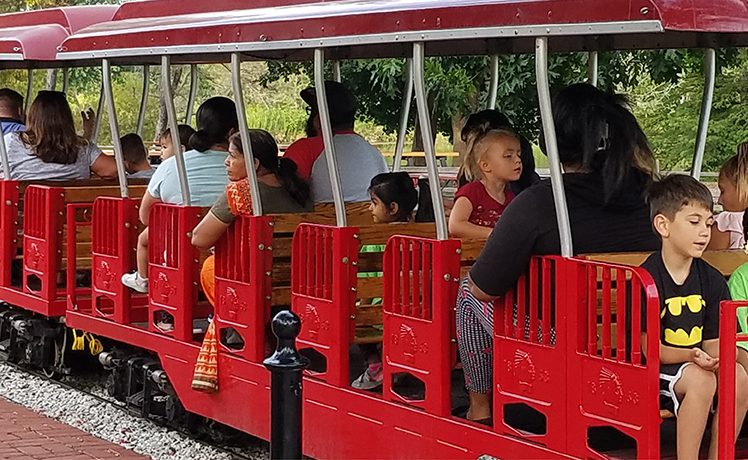
Field Trips
Book a field trip at blackberry farm.
Blackberry Farm is a living history museum where pioneer life is re-created through educational demonstrations and hands-on fun. Our educational experiences complement classroom curriculum for grades Pre-K and up. Topics and hands-on activities align with Illinois State Standards. Below are the different field trips to review when deciding which field trip would best for your group.
- Self-Guided Field Trips (May - Sept.)
- Guided Field Trips (Sept. - Oct.)
- How to Book Your Field Trip
Self-Guided Field Trips (May – September)
Self-Guided field trips are offered May-September. Self Guided field trips allow students to explore educational exhibits and demonstrations in addition to all of Blackberry Farm’s rides and activities. For more information about Blackberry Farm’s historical sites and attractions please visit our Plan Your Visit page.
May : Monday-Friday, 9:30am-2pm June-August : Monday-Friday, 9:30am-3:30pm September : Friday, 9:30am-3:30pm
Illinois State Standard: 15.C.1a, 15.C.1b, 18.B.1a, 16.A.1c, 16.A.1b, 16.A.2c, 16.B.2d, 16.C.2c, 16.E.2a
Field Trip reservations cannot be scheduled on Free Museum Days (2024 Dates: June 5, 19; July 3, 17, 31, August 14)
Guided Field Trips (September & October)
Guided field trips are offered September & October. Field trips are 2 hours in length and have a minimum of 25 students and a maximum of 100 students. Please Note: Blackberry Farm is closed to the public during guided field trips. Only the sites involved with the field trip will be open during the visit.
September : Monday – Thursday, 9:30 or 10 a.m. October : Monday-Friday, 9:30 or 10 a.m.
Apple Hayride (Pre-K to Grade 2):
Take a tractor-driven hayride to the farm’s own apple orchard, learn about the legend of Johnny Appleseed, see and use an antique apple press and sample some tasty apple treats.
Illinois State Standards: 15.C.1a, 15.C.1b, 18.A.1, 17.C.1a, 17.C.1b, 16.A.1A, 16.A.1b, 16.A.1c, 16.B.1
Pioneer Exploration (Grades 1 to 2):
Step into the life of a child from the 1800s. Students will receive a lesson in our One-room Schoolhouse, try their hand at daily chores at the Pioneer Cabin, visit with the weaver for a hands-on experience working with wool and learn about animals at the Discovery Barn.
Illinois State Standards: 15.C.1a, 15.C.1b, 18.A.1, 18.B.1a,18.C.1, 17.C.1a, 17.C.1b, 17.D.2b, 16A.1a, 16.A.1b, 16.A.1c, 16.B.2d, 16.C.2c, 16.D.2B, 16.E.2a
Destination 1800s (Grades 3 to 5):
Through hands-on and interactive activities, students will step back in time to learn why pioneers chose to move to Illinois and how they survived. Explore the Pioneer Cabin, Blacksmith Shop, Print Shop and Weaver’s Cabin.
Illinois State Standards: 15.C.1a, 15.C.1b, 18.A.2, 18.B.1a, 18.C.1, 18.C.2, 15.C.1a, 17.C.1b, 17.C.2c, 17.D.2b, 16.A.1a, 16.A.1b, 16.A.1c, 16.A.2c, 16.B.2d, 16.C.2c, 16.D.2b, 16.E.2a
One-Room Schoolhouse (Grades 2 to 5):
The One-room Schoolhouse program offers an immersive experience in the life of children of the 1800s. Activities will be led in the most authentic way possible and simulate actual lessons and activities form the days of the One-room Schoolhouse. Maximum number: 30 Students.
Illinois State Standards: 16A.1a, 16.A.1b, 16.A.1c, 16.B.2d
Please follow the link below for the required request form you will need to fill out in order to book your field trip.
Self-Guided Field Trip Form
Guided Field Trip Form
- Download the appropriate form for your field trip type, fill out all fields, and email it to [email protected] .
- A Blackberry Farm staff member will respond to your request within 48 hours. Blackberry Farm takes all inquiries on a first-come, first-served basis, and your submission will be responded to in the order in which it was received.
- Once your field trip has been officially booked a confirmation email will be sent including all of your field trip details.
Still unsure which field trip would best fit your group needs? Have additional questions for our staff? We’re here to help. Fill out the form below and we’ll get back to you as soon as possible.
Having trouble opening PDFs? Download Adobe Reader here.
Install Blackberry Farm
Install this application on your home screen for quick and easy access when you’re on the go.
Just tap then “Add to Home Screen”

IMAGES
VIDEO
COMMENTS
"Field Trip" is a song by American hip hop supergroup ¥$ (composed of rapper Kanye West and singer Ty Dolla Sign) and American rappers Playboi Carti and Don Toliver featuring fellow American rapper Kodak Black. It was released through West's YZY brand as the third track from the superduo's second collaborative album, Vultures 2, on August 3, 2024.
Understanding how money works is essential for our future success. So, prepare for an adventure-packed summer with these ten fantastic field trips that will teach you all about money while having a blast! Bank Bonanza: Visit a local bank and discover the secrets of money management. Take a tour of the bank and learn about different bank ...
The nominal fee allows us to tailor our tours to the specific needs of your group. Additionally, we'll provide teacher packets with curriculum information and take-home worksheets for students, enhancing the educational value of your visit. Register your class for a field trip using the button below, email [email protected] or call (719) 482-9814.
So, when it comes to financial education, I strongly encourage parents and educators to give kids more money focused field trips. Below, find five (5) fun, low cost easy to execute field trips that will help any parent or educator teach kids about money. Start teaching kids about money when the are young!!! (1) Field Trip to the Bank.
Field trips are a quintessential school experience. You usually only get one or two a year so it's important to do it right! ... Bank: Money is a new concept for these kiddos, and they'll be fascinated to step inside the vault and learn other bank secrets. Fire station: There's just something about a fire truck that gets every little one ...
Free community events are another great way to save on homeschool field trips. Often cities or non-profit organizations will sponsor free events. Keep an eye out for these on local news websites and social media. What's available will vary by area, but these can include things like cultural heritage events, musical performances, outdoor ...
Book a Field Trip to the Money Museum in Chicago. Planning a field trip to the Chicago Fed's Money Museum at 230 South LaSalle Street? The Money Museum is most appropriate for middle and high school students. Museum staff members are not able to accommodate reservations for student groups younger than sixth grade. Student groups are required ...
Here, the district funds the buses for field trips. Of course, they have eliminated all field trips except for one in fourth grade and the senior trip for the high schoolers (The seniors raise money for the cost of the trip through fundraisers, if they raise enough the seniors going on the trip don't have to pay anything to go, they just have to pay extra for things like ski lessons or whatever.
Participating in the Money Wise: Earn, Spend & Save field trip is a fun way to provide students with a foundation of financial literacy by presenting activities in a real world setting. Young learners discover what it means to earn, spend, and save money during this financial literacy focused field trip. At the start of the trip, students will ...
1. Research how the trip aligns with and supports your curriculum. Big trips cost schools money, even if you're doing field trip fundraising to support most of it. You're more likely to get your trip approved if you can show your administrator how and why this trip will enhance your curriculum.
Money Field Trip at the Mall. Individual and team Money Missions teach students how to: Develop their own ideas of managing their shopping within a budget. Shop around and ask the right questions to get the best deals. Quickly calculate sale and promotional discounts. Calculate the number of hours they would have to work to pay for certain items.
Money Math. Looking for a new way to teach about money in your classroom? Just explore any of these interactive sites that make learning about math and money fun for your students. A simple method for teaching probability is by doing coin flips — and if you visit Ken White's Coin Flipping Page, you don't even have to bring your pennies to class!
The Money Museum is located on the first floor of the Federal Reserve Bank of Chicago at 230 South LaSalle Street, on the corner of Jackson Boulevard and LaSalle. Parking. ... Read about nearby attractions for additional stops on your field trip.
Not only does trivia night help generate money for field trips, but it also encourages teamwork skills and critical thinking among participants in its cheerful environment. 5. Art Auction. Unlock the creative potential of your school community and raise funds with an art auction! This elegant, visually stunning event will not only showcase ...
Field trips can take place at local attractions, museums, historic sites, nature centers, and more. They can also be conducted virtually, allowing students to explore faraway places without ever leaving the classroom. Overview of Field Trips: Exploring the Benefits and Challenges. Field trips are an important part of any school curriculum.
This field trip roster and money collection form is a must-have for any field trip planner. Includes space for you to write student name, payment received, permission slip received, and emergency contact info. Check out my I Value Wait Cards to encourage your students to wait for your help when multiple students raise their hands.
The best way to find the right one for you is to search in Google or Bing for 'field trip grants for (your town, county or state name). Additionally, a number of state arts and cultural councils offer 'Big Yellow School Bus Grants' of up to $750-$1000 to cover the cost of field trips to state arts and cultural institutions.
Our Story. Financial Field Trips began with a simple yet powerful idea: to transform the way financial education is delivered. Founded by a group of passionate educators and dedicated professionals, we recognized that traditional classroom learning often fell short in preparing students for the real-world financial challenges they would face.
Field trip money. Discussion in 'Debate & Marathon Threads Archive' started by Ponypal, Jan 21, 2014. Thread Status: Not open for further replies. Page 2 of 3 < Prev 1 2 3 Next > JustMe Virtuoso. Joined: Jun 7, 2006 Messages: 7,946 Likes Received: 4. Jan 21, 2014.
Hack #2 Field Trip Checklist . Collecting money, forms, and chaperone requests can get a bit unruly for 20+ students. Use a checklist to keep yourself organized as to who's going, who paid, and who signed up to be a chaperone. Things I keep track of: Permission slip form turned in; Field trip money; Chaperone request (and approved!) Chaperone ...
Welcome to our EPIC Moscow itinerary. If you prefer above-ground transportation, buses, trams, and trolleybuses, run throughout the city and provide a rather comfortable alternative to the metro. Moscow's metro, buses, trams, and trolleybuses are all accessible with a 'Troika' card. This card can be topped up with any sum of money at a ...
Here are just a few ideas for music field trips for your homeschoolers: 1. Attend a Symphony or Orchestra Performance. If you live close to a city where there is a symphony, orchestra, chamber music performance troupe or other groups, check into getting tickets for you and your kids. Finding matinee concerts on weekends is usually easy or you ...
After questions were raised about the trip in 2018, Brownell paid the NRA $17,000 — a transaction that Brownell's lawyer told the committee was requested by the NRA as a way of "getting the trip ...
Field Trip reservations cannot be scheduled on Free Museum Days (2024 Dates: June 5, 19; July 3, 17, 31, August 14) Guided Field Trips (Sept. - Oct.) Guided Field Trips (September & October) Guided field trips are offered September & October. Field trips are 2 hours in length and have a minimum of 25 students and a maximum of 100 students.